Birds are one of the most fascinating and diverse creatures in the world. They can be found in nearly every corner of the globe and come in a variety of shapes and sizes.
From the majestic eagle soaring above the clouds to the tiny hummingbird flitting through the garden, birdwatching can be one of the most rewarding activities for nature enthusiasts. Assa, with its diverse habitats and numerous species of birds, is no exception.
Here, you can find a wide variety of birds in a variety of habitats, from open grasslands to thick forests. Birdwatchers can enjoy the sight of many species of raptors, waterfowl, songbirds, and even some rare species.
Whether you’re looking to spot a rare species or just want to experience the beauty of nature, birdwatching in Assa is sure to delight you.
1. Greater Adjutant

The greater adjutant is a large species of stork belonging to the Ciconiidae family. This species of stork is found in parts of South and Southeast Asia, with populations in India, Bangladesh, Cambodia, and Thailand.
It is closely related to the lesser adjutant of Asia and the marabou stork of Africa, which both belong to the same genus. The greater adjutant is a large bird with a wingspan of up to 2.5 meters. It has a long neck, a bald head, and a yellowish-orange beak.
The greater adjutant is a scavenger and feeds on carrion, insects, and other small animals. It is listed as endangered due to habitat destruction and hunting, and its population has declined by over 50% in the last three generations.
| Kingdom | Animalia |
| Phylum | Chordata |
| Class | Aves |
| Order | Ciconiiformes |
| Family | Ciconiidae |
| Genus | Leptoptilos |
| Species | L. dubius |
2. Lesser Adjutant
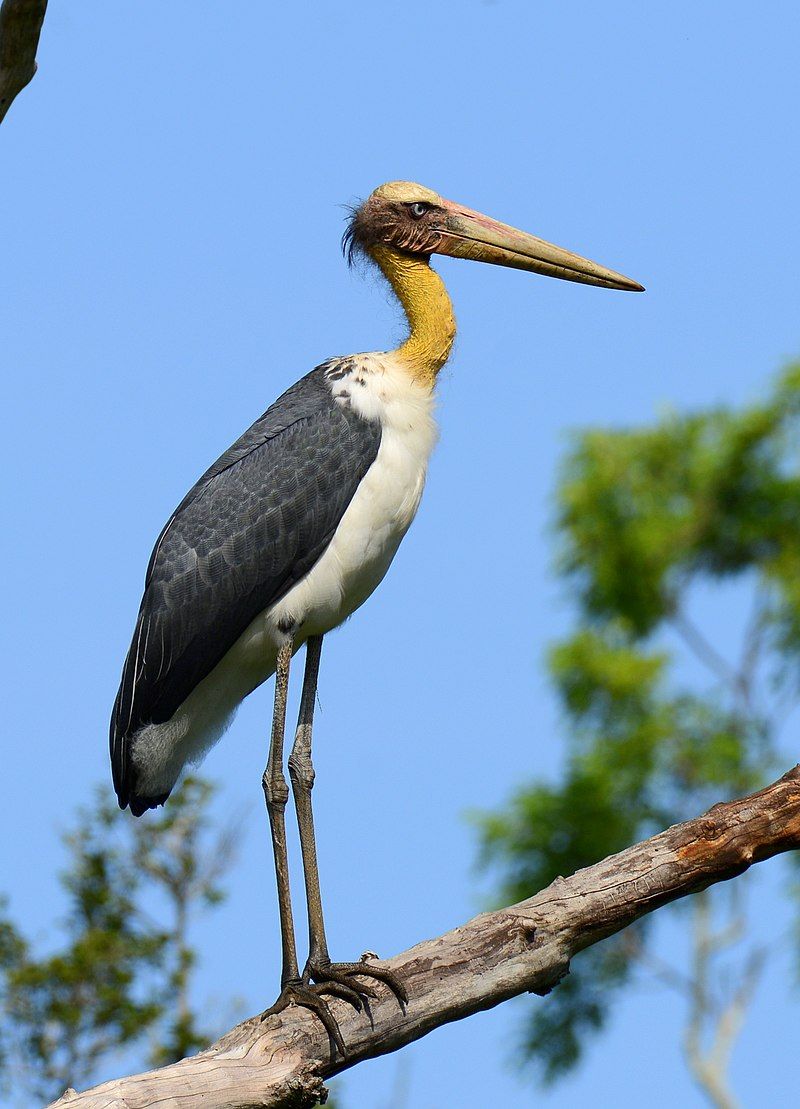
The lesser adjutant is a large wading bird in the stork family Ciconiidae. This species is easily distinguished from its relatives due to its unique features, such as its bare neck and head. It can generally be found in wetland habitats, where it tends to be solitary.
In comparison to the related greater adjutant, it is less likely to scavenge for food. The lesser adjutant is a large bird, usually ranging from 76 to 90 cm in length and having a wingspan of up to 2.2 m. Its plumage is mainly grey and black, with a white neck and head.
Its bare neck and head are what set it apart from other members of its genus and help to identify it. The lesser adjutant prefers to live in wetland habitats, such as marshes, swamps, and flooded forests. It is solitary and prefers to hunt and forage for food alone.
It has a varied diet, consisting of small fish, snakes, rodents, and insects. It is less likely to scavenge for food than the greater adjutant, which is more inclined to seek out carrion and waste.
The lesser adjutant is an important species in many wetland habitats, as it helps to keep the population of small animals in check. This helps to maintain the natural balance of the ecosystem. Unfortunately, its population is in decline due to habitat destruction and pollution.
Conservation efforts are in place to ensure that this species is protected and its numbers can be restored.
| Kingdom | Animalia |
| Phylum | Chordata |
| Class | Aves |
| Order | Ciconiiformes |
| Family | Ciconiidae |
| Genus | Leptoptilos |
| Species | L. javanicus |
3. Spotted Owlet
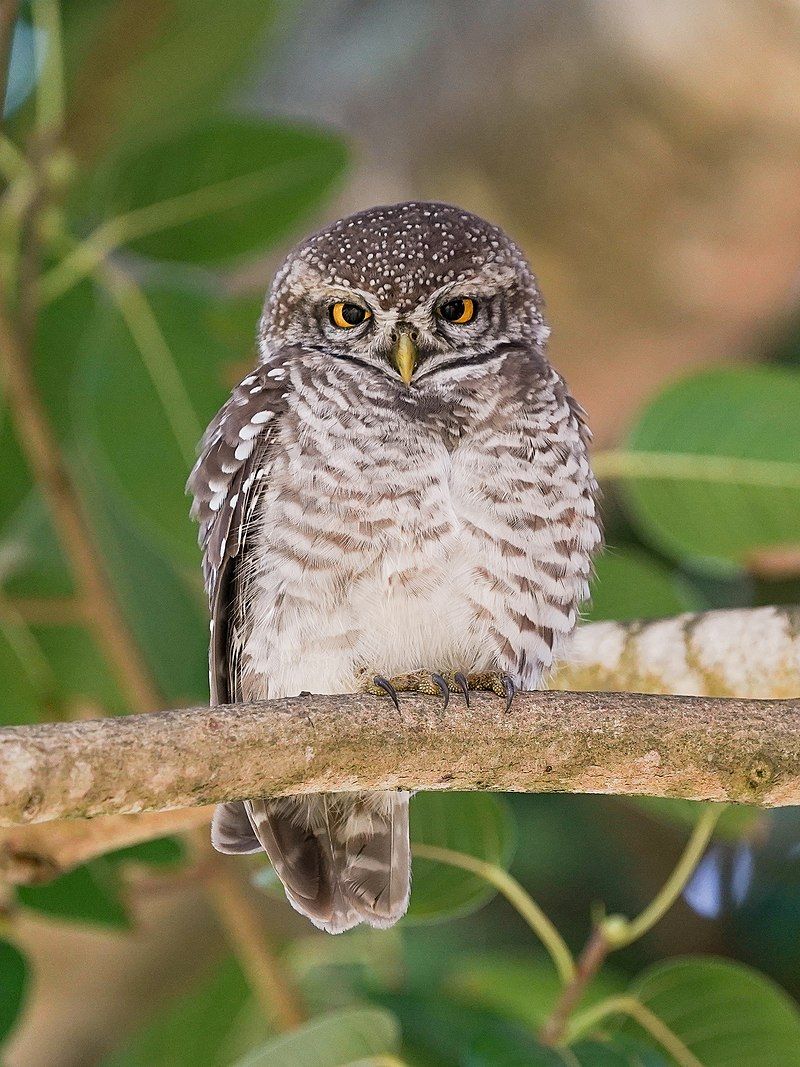
The spotted owlet is a small owl native to tropical Asia, spanning from India to Southeast Asia. It is a common resident of open habitats such as farmland and human habitations, meaning that it has been able to adapt to living in cities.
It is a social bird, usually found roosting in small groups in the hollows of trees or cavities in rocks and buildings.
While the spotted owlet is a common sight in cities, it is also found in other open habitats such as grasslands and agricultural areas, as well as forests and woodlands.
In these areas, they often roost in cavities or crevices in trees, as well as in abandoned structures such as buildings and caves.
The spotted owlet is a unique bird, with its ability to adapt to various habitats and its social behavior, making it a valuable part of the ecosystem.
| Kingdom | Animalia |
| Phylum | Chordata |
| Class | Aves |
| Order | Strigiformes |
| Family | Strigidae |
| Genus | Athene |
| Species | A. brama |
4. Red-vented Bulbul
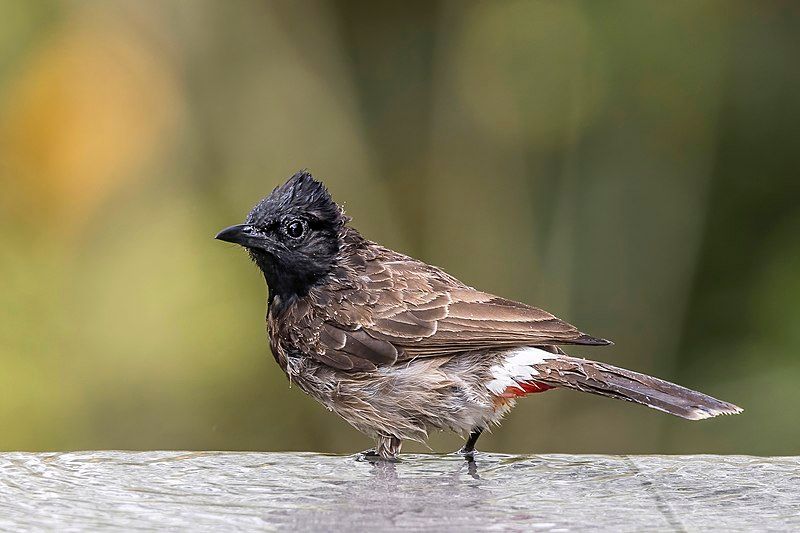
The red-vented bulbul is a small passerine bird that belongs to the bulbul family. It is native to the Indian subcontinent and is found across areas such as Sri Lanka, Burma, Bhutan, and Nepal.
It is a resident breeder, meaning that it does not migrate seasonally and breeds in the same region throughout the year. The red-vented bulbul is a medium-sized bird with a black head and throat and a red patch on its chest.
It has a distinctive call that is often heard during the breeding season. The red-vented bulbul is an omnivore and feeds on a variety of fruits and insects, as well as small reptiles and amphibians.
It is a common bird that can be found in many urban areas, including parks and gardens. It is also a popular cage bird due to its attractive appearance and loud call.
| Kingdom | Animalia |
| Phylum | Chordata |
| Class | Aves |
| Order | Passeriformes |
| Family | Pycnonotidae |
| Genus | Pycnonotus |
| Species | P. cafer |
5. Ruddy Shelduck
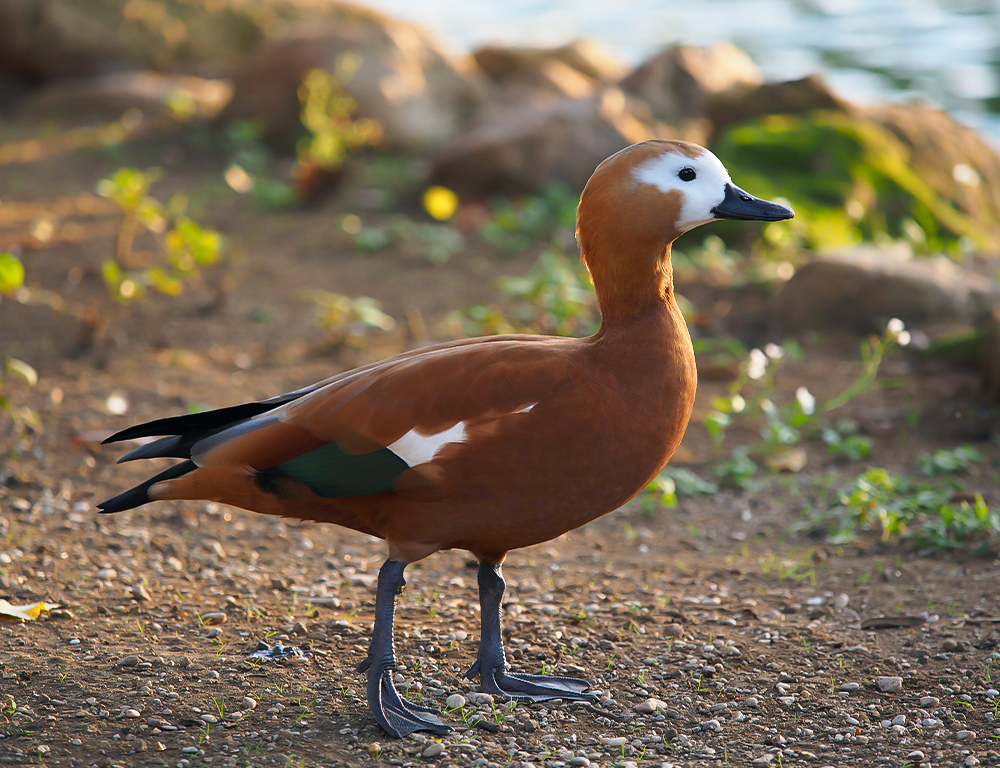
The ruddy shelduck, also known as the Brahminy duck, is a species of waterfowl that belongs to the family Anatidae.
It is a medium-sized bird, typically measuring 58 to 70 cm in length and having a wingspan of 110 to 135 cm.
The ruddy shelduck is easily recognized by its reddish plumage, with a white head, neck, and breast, and brownish-black wings and tail.
They are found throughout South and Central Asia and are well-adapted to life in wetlands.
The ruddy shelduck feeds mainly on insects, seeds, and plant matter, and forms pairs during the breeding season to raise their young.
They are also known to form large flocks during the non-breeding season and are often seen in large numbers in wetlands.
The ruddy shelduck is generally considered to be a species of least concern, with a stable population and no major threats to its survival.
| Kingdom | Animalia |
| Phylum | Chordata |
| Class | Aves |
| Order | Anseriformes |
| Family | Anatidae |
| Genus | Tadorna |
| Species | T. ferruginea |
6. Leptoptilos
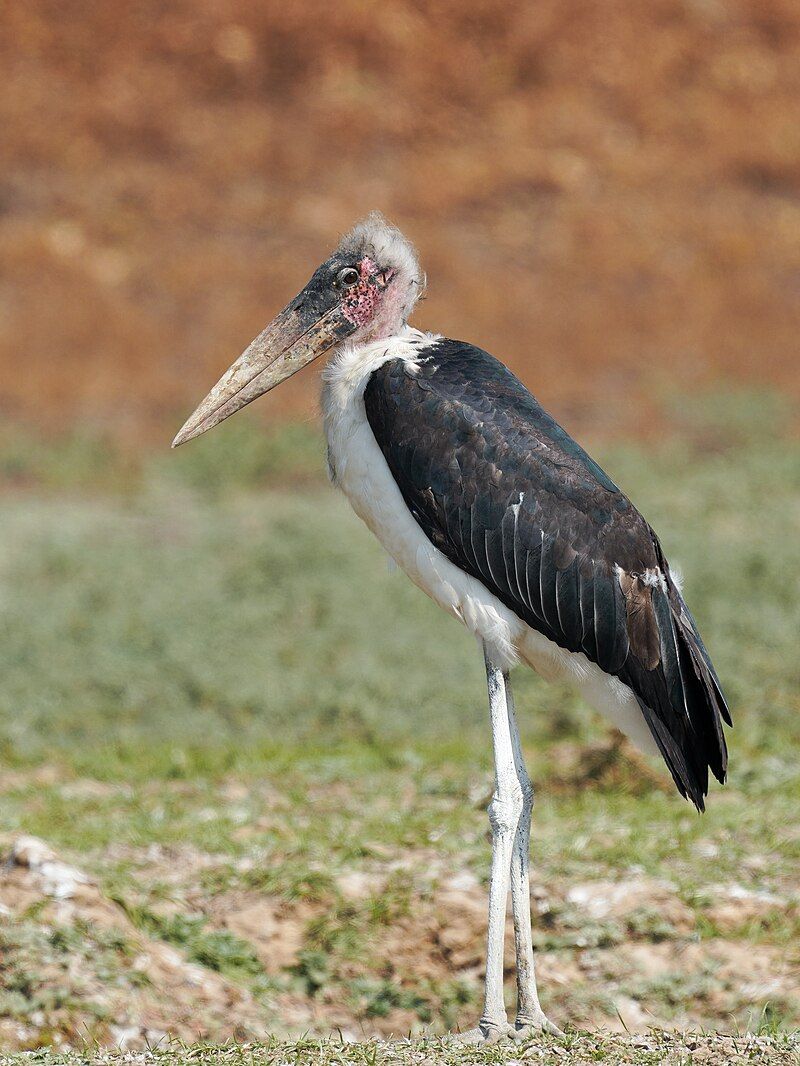
Leptoptilos is a genus of tropical storks, which are large birds that are typically found in southern Asia and Sub-Saharan Africa. They are also known as adjutants, a name that derives from the Greek words “leptos” and “ptilos”, which literally mean “thin feather”.
These birds are quite remarkable for their size, measuring between 110 to 150 cm in height and having a wingspan of 210 to 250 cm. This makes them larger than most other species of birds, which is quite an impressive feat.
Furthermore, their wingspan allows them to fly over great distances, which is an advantage in finding food and shelter. As a result, they are strong and powerful birds that can travel long distances and have impressive wingspan.
| Kingdom | Animalia |
| Phylum | Chordata |
| Class | Aves |
| Order | Ciconiiformes |
| Family | Ciconiidae |
| Genus | Leptoptilos |
7. Asian Openbill
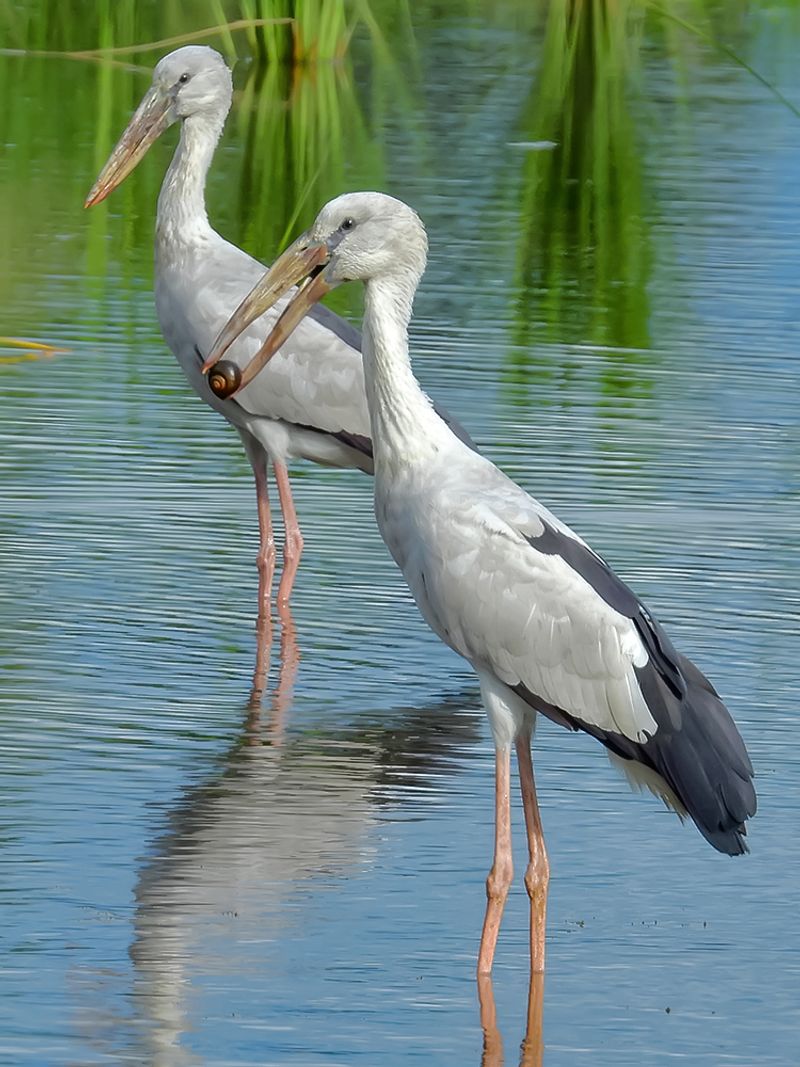
The Asian openbill stork is a large wading bird belonging to the Ciconiidae family of storks. This species of stork is native to the Indian subcontinent and Southeast Asia and is easily identifiable due to its distinct features.
Its large size and long legs make it a useful wading bird for catching fish and other prey in shallow water. Its most distinctive feature is its bill which is open at the tip and curved downwards.
This unique feature helps the birds to open mollusks and other aquatic creatures with ease. The Asian openbill stork is an important species in the region due to its role in controlling the populations of certain aquatic prey species.
They are also important for their ability to disperse seeds and help maintain the balance of the local ecosystem.
| Kingdom | Animalia |
| Phylum | Chordata |
| Class | Aves |
| Order | Ciconiiformes |
| Family | Ciconiidae |
| Genus | Anastomus |
| Species | A. oscitans |
8. Darters
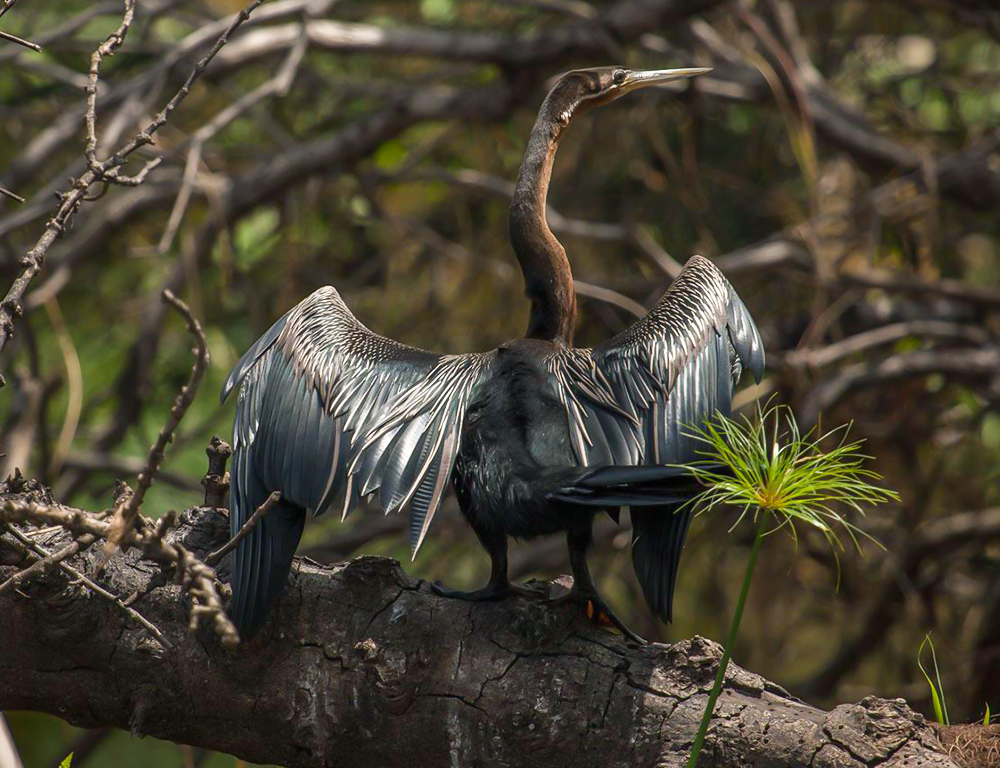
The darters, anhingas, or snakebirds are a family of waterbirds belonging to the genus Anhingidae. This family contains four living species, three of which are very common and widespread. These species are mainly found living in tropical areas.
The fourth species is much rarer and is classified as Near Threatened by the International Union for Conservation of Nature (IUCN). This species is facing a higher risk of extinction due to habitat loss and other human activities.
All four species of the Anhingidae family show unique traits such as long necks and webbed feet that make them well-adapted to their aquatic lifestyles.
These birds are also known for their ability to quickly dive and swim underwater, making them particularly efficient hunters of fish.
Overall, the Anhingidae family is an important part of our environment, and conservation efforts are needed to ensure that these species can continue to thrive in the future.
| Kingdom | Animalia |
| Phylum | Chordata |
| Class | Aves |
| Order | Suliformes |
| Family | Anhingidae |
| Genus | Anhinga |
9. Common Myna
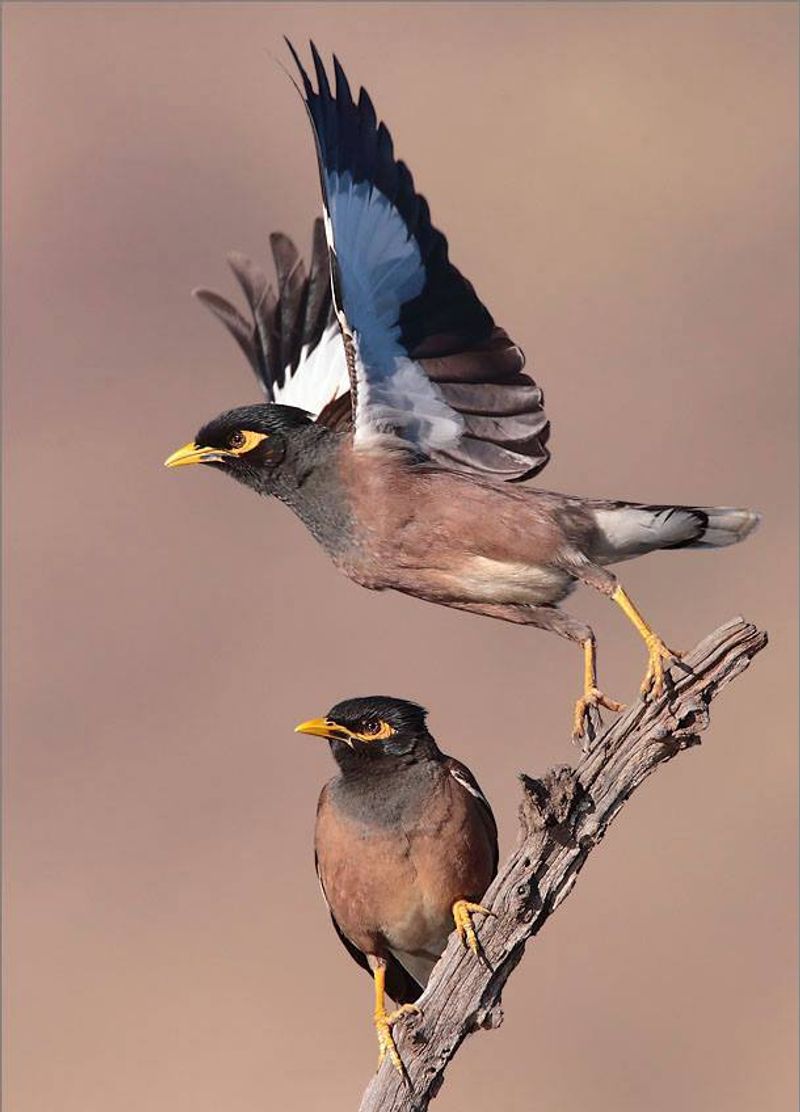
The common myna, more commonly known as the Indian myna, is a type of bird that belongs to the Sturnidae family and is native to Asia.
It is an omnivorous bird, meaning it feeds on both plants and animals and is usually found in open woodland areas.
It is a very territorial bird and has a strong instinct to protect its environment. This bird has adapted to human environments extremely well. It is common to find them in cities, where they have made themselves at home.
They can often be seen in parks, gardens, and other urban areas, where they can scavenge for food. They have adapted to the presence of humans and have learned to coexist with them. The common myna is also known for its loud and pleasant call.
It is usually heard in the early morning and late evening and is often described as a pleasant sound. This bird’s adaptability and ability to thrive in human environments have made it a popular pet.
It is known to be intelligent, social, and easy to train, making it a popular choice amongst bird owners. Overall, the common myna is an impressive bird.
It is native to Asia but has adapted to urban environments very well. It is omnivorous, territorial, and has a pleasant call.
It is also intelligent and easy to train, making it a popular pet.
| Kingdom | Animalia |
| Phylum | Chordata |
| Class | Aves |
| Order | Passeriformes |
| Family | Sturnidae |
| Genus | Acridotheres |
| Species | A. tristis |
10. White-winged Duck
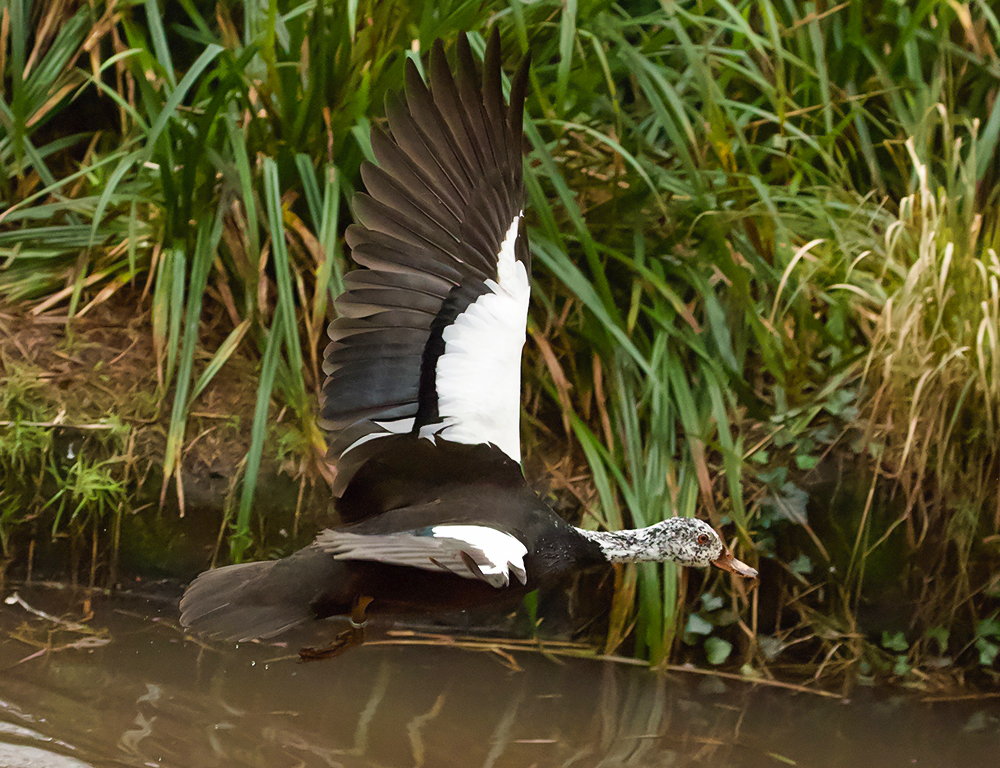
The white-winged duck, also known as the white-winged wood duck, is a type of large duck that has been classified in the genus Cairina. It is closely related to the Muscovy duck and other dabbling ducks.
This species of duck is easily identifiable by its distinctive white wings, which can be seen both in flight and while it is resting.
It is typically found in North and South America, especially in the Amazon rainforest, and its diet consists mainly of aquatic plants, insects, and other small aquatic animals.
The white-winged duck is known to be a very social species, often forming large flocks with other ducks and other waterfowl.
It is considered to be an important species in terms of providing a food source for both humans and other animals, as well as helping to maintain the local ecosystem.
| Kingdom | Animalia |
| Phylum | Chordata |
| Class | Aves |
| Order | Anseriformes |
| Family | Anatidae |
| Genus | Asarcornis |
| Species | A. scutulata |
11. Black Drongo
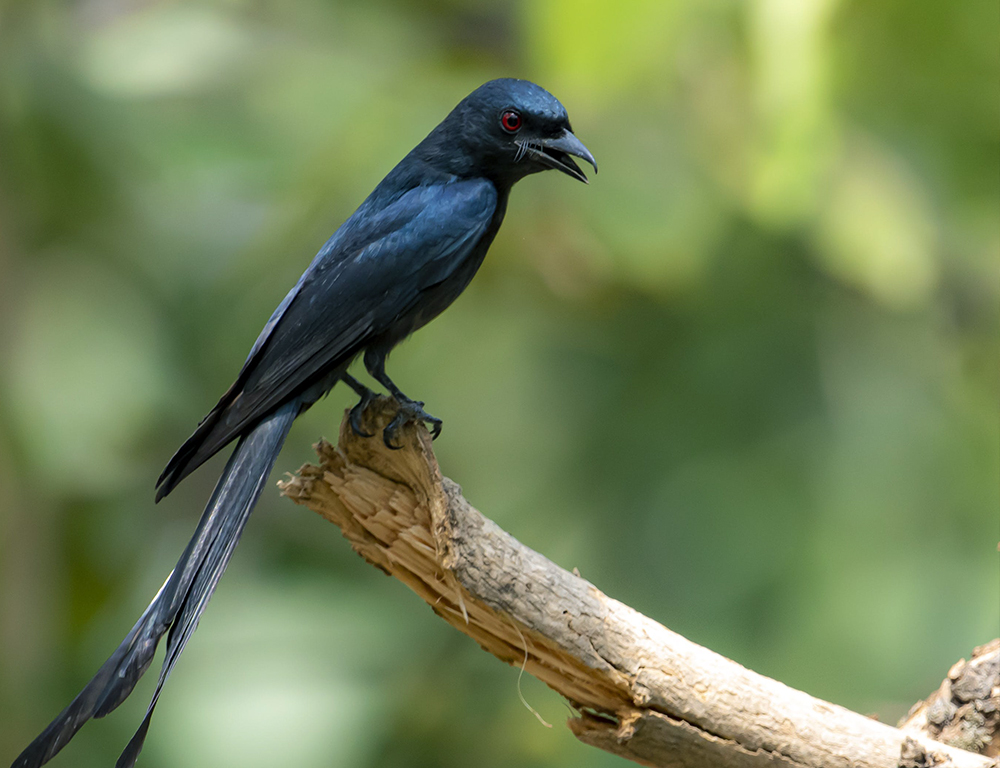
The black drongo is a small, Asian passerine bird of the drongo family, Dicruridae. It is commonly found in tropical southern Asia, spanning a large area from southwest Iran, through Pakistan, India, Bangladesh, and Sri Lanka, all the way east to southern China and Indonesia.
The black drongo is a resident breeder in these areas and is an occasional visitor to Japan. The black drongo has a black or dark grey body, with a long tail and a large, crest-like head. Its wings are broad and pointed.
It has a white patch on its throat and a white-tipped tail. The black drongo has a loud, chattering call that can be heard from a distance. The black drongo feeds mainly on insects, which it catches in flight. It is also known to eat some fruit.
It builds its nest in trees or shrubs, and the female usually lays two to three eggs per clutch. The black drongo is a highly social bird, living and mating in pairs or small family groups. The black drongo is an important part of the ecosystem in tropical southern Asia.
It helps to keep the insect population in check and also helps to disperse the seeds of fruits that it eats. It is a fascinating and beautiful bird to observe, and its presence in a region is always welcomed.
| Kingdom | Animalia |
| Phylum | Chordata |
| Class | Aves |
| Order | Passeriformes |
| Family | Dicruridae |
| Genus | Dicrurus |
| Species | D. macrocercus |
12. Jungle Babbler
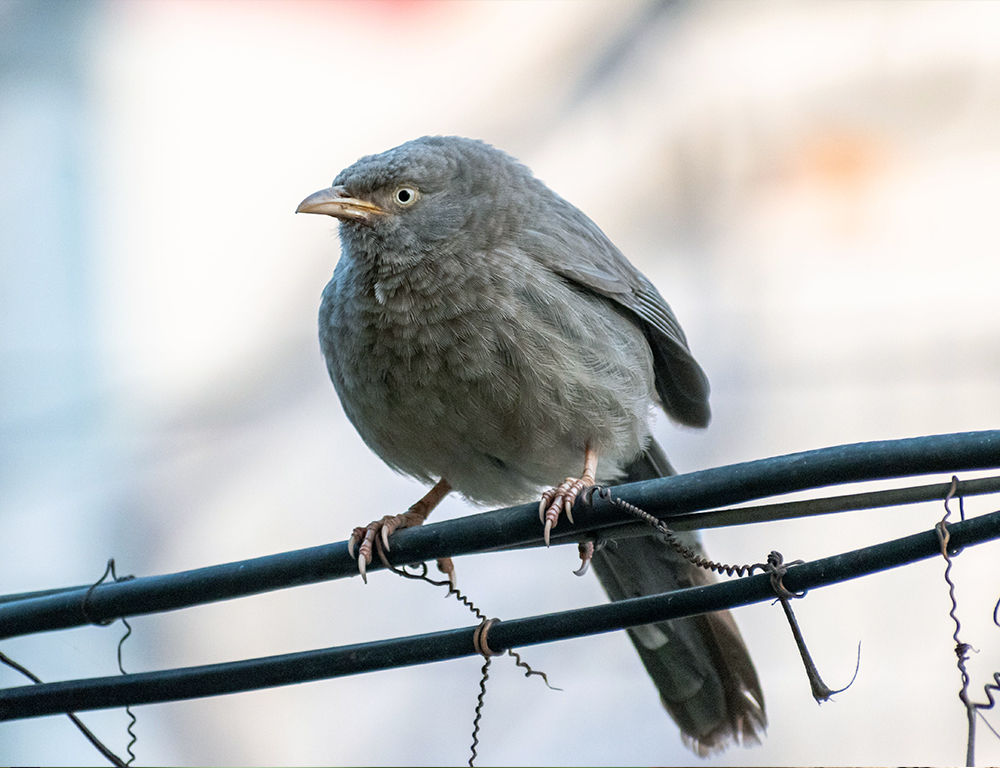
The Jungle Babbler is a type of bird that belongs to the Leiothrichidae family, which is native to the Indian subcontinent. It is known for its gregarious behavior, and it is usually found foraging in small groups of six to ten birds.
This habit of forming small groups has earned it the name of a ‘seven-sister’ or ‘saath bhai’ in the Hindi language. Jungle babblers are generally seen in pairs or small groups, searching for food in the leaf litter on the forest floor.
They are known to be very vocal, with their loud calls and chirps echoing through the forest. Jungle babblers are highly social birds, and they live in a hierarchical system, with the dominant birds getting the first pick of the food.
They are often seen perched on the top of trees or high branches, scanning the area for potential predators. The Jungle Babbler is omnivorous, and its diet includes insects, fruits, nectar, and grains.
They also forage for insects on the ground and sometimes feed on the eggs and nestlings of other birds. The Jungle Babbler is an important species of bird, as it helps to control the insect population and helps to disperse the seeds of many plants.
They are also known to be an important indicator of the health of the forest they inhabit, as a decrease in their population can often be a sign of environmental degradation.
| Kingdom | Animalia |
| Phylum | Chordata |
| Class | Aves |
| Order | Passeriformes |
| Family | Leiothrichidae |
| Genus | Argya |
| Species | A. striata |
13. Asian Koel
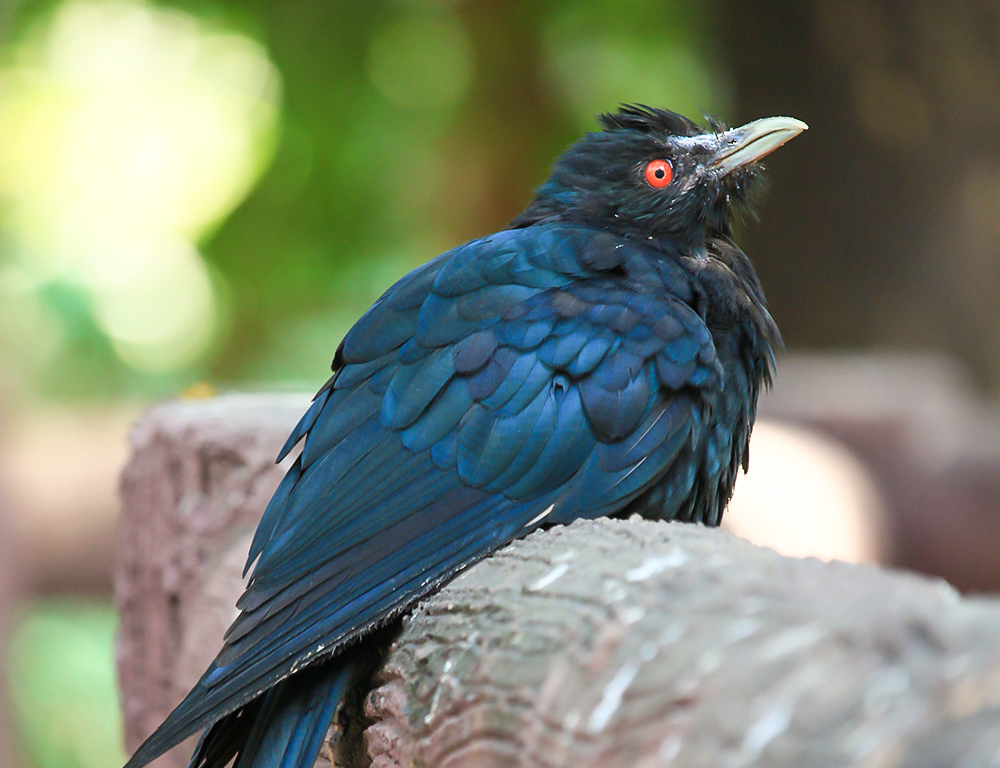
The Asian koel is a species of bird that belongs to the Cuculiformes, a group of birds commonly known as cuckoos. This species is found in the Indian Subcontinent, China, and Southeast Asia, which makes it quite widespread.
It is closely related to two other species, the black-billed koel and the Pacific koel, which are sometimes considered subspecies of the Asian koel.
This means that the three species form a superspecies, meaning that they have many similarities between them, such as similar physical features, behavior, and habitat. The Asian koel is a medium-sized black bird, with a long tail and a sharply hooked bill.
They are usually found in wooded areas and are known for their loud, distinctive call which they use to communicate with each other. They are usually seen in pairs during the breeding season and are often found foraging for food in open areas.
They feed on a variety of insects, small reptiles, and fruits.
| Kingdom | Animalia |
| Phylum | Chordata |
| Class | Aves |
| Order | Cuculiformes |
| Family | Cuculidae |
| Genus | Eudynamys |
| Species | E. scolopaceus |
14. Indian Pond Heron
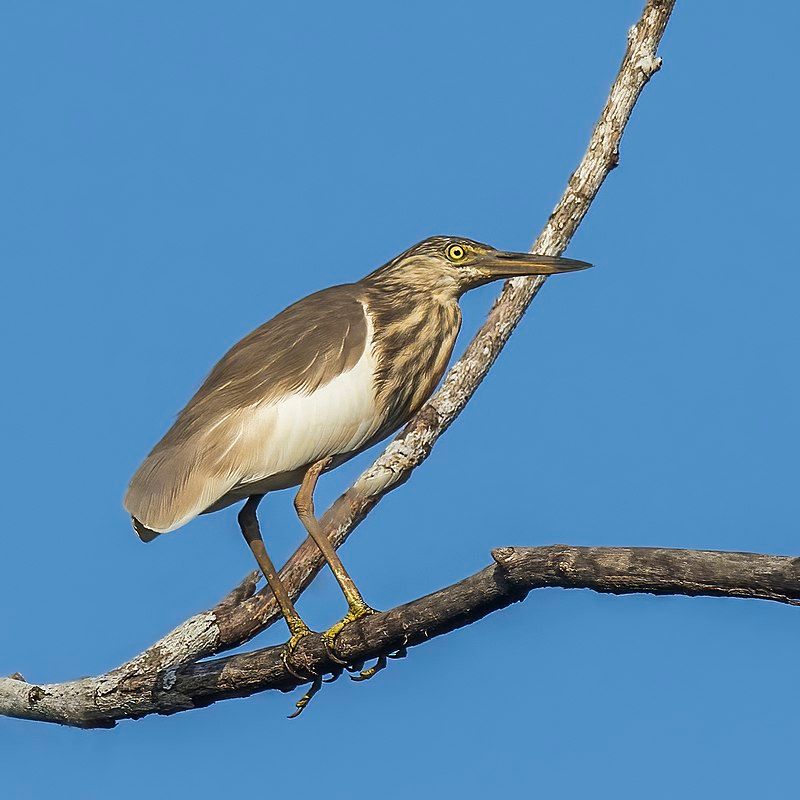
The Indian pond heron, also known as the paddy bird, is a species of small heron belonging to the Old World. It is found in a wide range of habitats, including rivers, ponds, marshes, and wet fields, across southern Iran, India, Burma, and Sri Lanka.
It is an opportunistic feeder, consuming a range of small aquatic animals, including fish, frogs, and aquatic insects.
The Indian pond heron is a migratory species, with some populations wintering in southern Asia, and others traveling to the Indian Ocean islands and Southeast Asia. The Indian pond heron is a solitary nester, with pairs forming during the breeding season.
The nest is usually built in a tree, but can also be found in reeds, shrubs, or on the ground. The female lays 2-5 eggs, which are incubated for about three weeks.
The chicks fledge at around four weeks old. The Indian pond heron is a species of conservation concern, due to habitat destruction and the effects of unsustainable hunting.
It is listed as a species of least concern by the IUCN, but conservation efforts are still necessary to ensure its long-term survival.
| Kingdom | Animalia |
| Phylum | Chordata |
| Class | Aves |
| Order | Pelecaniformes |
| Family | Ardeidae |
| Genus | Ardeola |
| Species | A. grayii |
15. Rufous Treepie
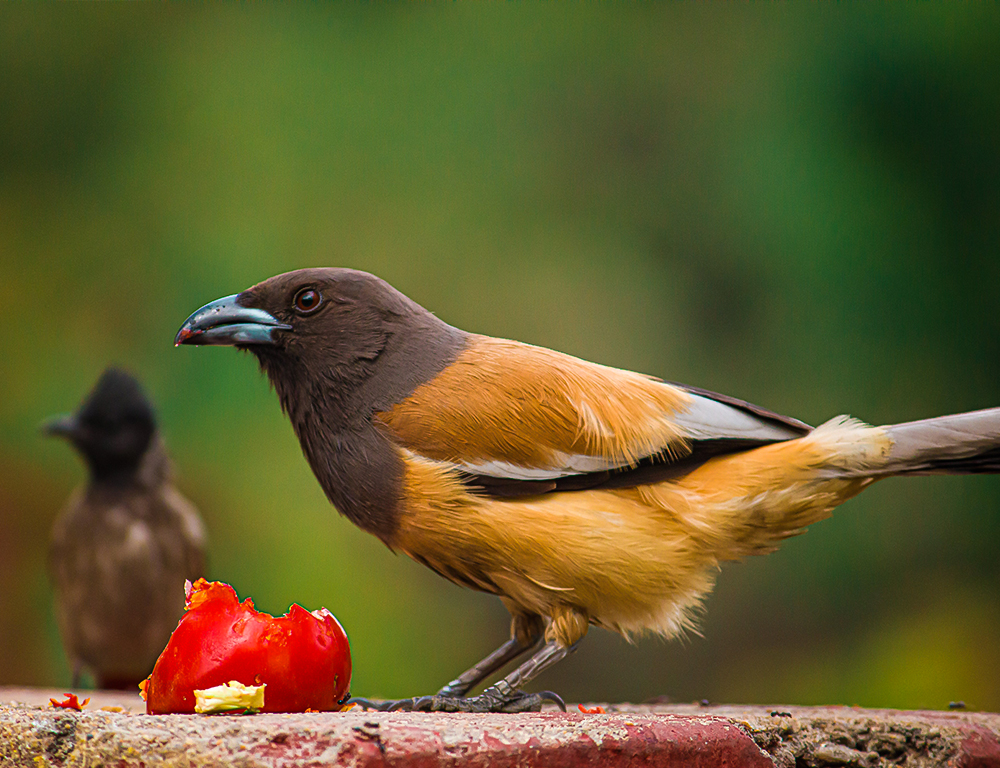
The rufous treepie is a beautiful bird that is native to the Indian Subcontinent and other parts of Southeast Asia. It is part of the Corvidae family, which includes crows, ravens, and magpies.
This species of treepie is quite distinctive because of its long tail and loud, musical calls. It is typically found in open scrub, agricultural areas, and forests, as well as urban gardens. The rufous treepie is medium-sized, with an overall length of around 30 cm.
Its plumage is brown and black, and its tail is long and broad. It has a white patch on its face and a white line around its eyes. The male and female have similar coloring, but the male tends to be more brightly colored.
The rufous treepie is an omnivore, meaning that it feeds on a variety of food sources. Its diet consists mainly of insects, fruits, and seeds. It also feeds on eggs and small vertebrates, such as lizards and frogs.
The bird is an active forager, often seen searching for food on the ground or in trees. The rufous treepie is a social bird, often seen in small flocks in its natural habitat. It is very vocal, with a variety of loud, musical calls that can be heard over long distances.
Its song is complicated and includes whistles, trills, and harsh notes. The rufous treepie is a common bird throughout its range. It is not threatened and is listed as a species of least concern by the International Union for Conservation of Nature.
It is a popular addition to aviaries and bird collections, and its distinctive calls make it a favorite of birdwatchers.
| Kingdom | Animalia |
| Phylum | Chordata |
| Class | Aves |
| Order | Passeriformes |
| Family | Corvidae |
| Genus | Dendrocitta |
| Species | D. vagabunda |
16. Red-wattled Lapwing
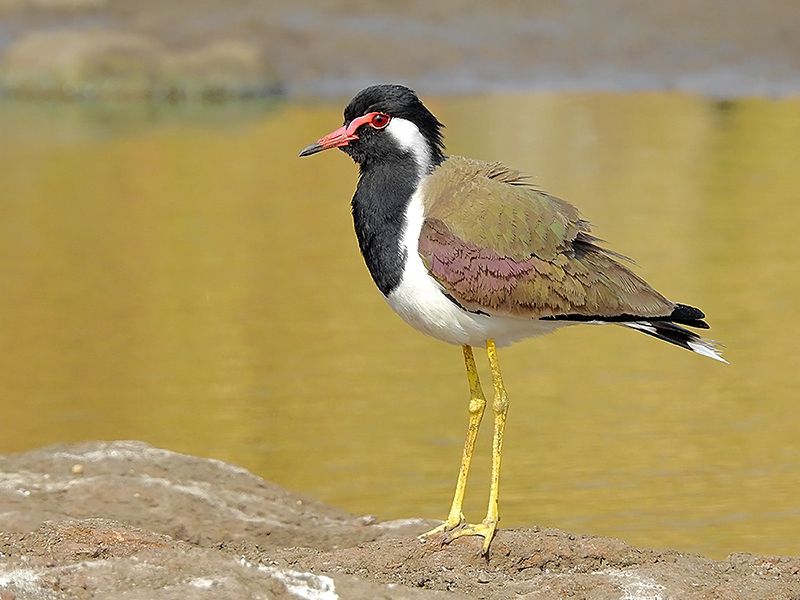
The red-wattled lapwing is a species of bird found in Asia. It belongs to the family Charadriidae, which includes lapwings and large plovers. This bird is classified as a wader, which is a type of aquatic bird that spends most of its time in the water or on the shoreline.
Lapwings are ground birds, meaning they spend most of their time on the ground and can’t perch. This type of bird is known for its loud and distinctive calls, which are used to both alert others of its presence and to attract a mate.
They are also known for their habit of running in circles when disturbed. The red-wattled lapwing is a striking bird with a black and white head, neck, and mantle, with a bright red wattle on its forehead. The wings and tail are brown, and the legs are yellow.
Their diet consists mainly of insects and other invertebrates, as well as some plant matter. Red-wattled lapwings are important to the local ecosystems in which they live, as they help to keep pest populations in check.
| Kingdom | Animalia |
| Phylum | Chordata |
| Class | Aves |
| Order | Charadriiformes |
| Family | Charadriidae |
| Genus | Vanellus |
| Species | V. indicus |
17. Common Tailorbird
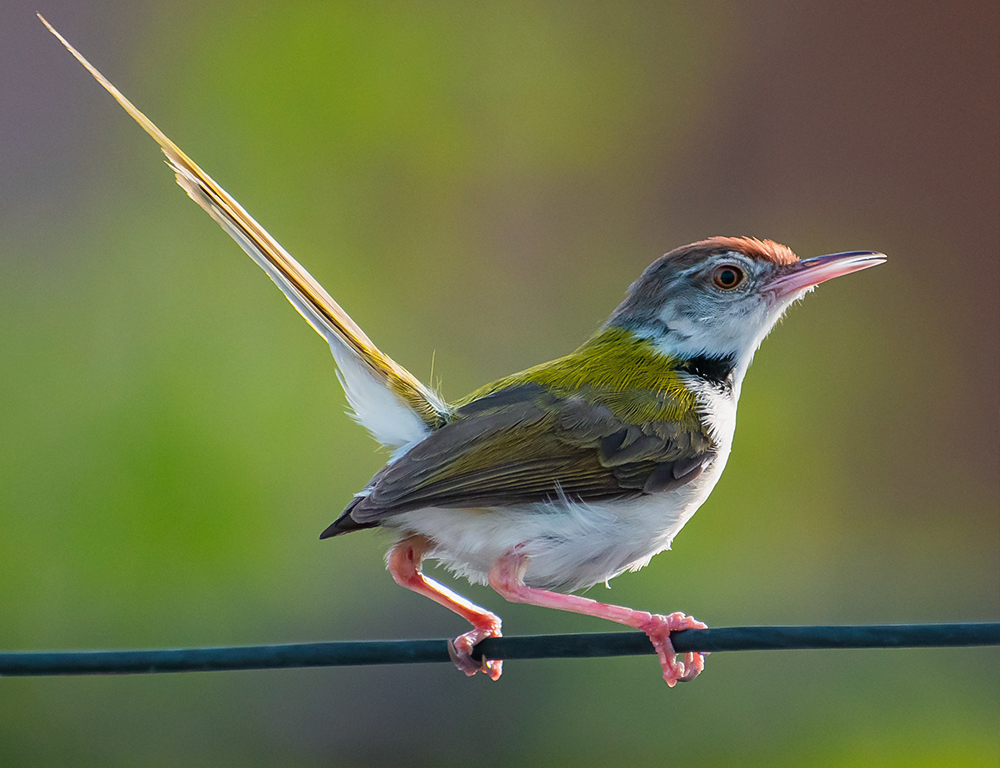
The common tailorbird is a species of songbird native to tropical Asia. It is well-known for its unique nesting habits, as it builds its nest by stitching pieces of leaves together with spider silk.
This behavior has earned the bird the name of “tailorbird” and has been immortalized by Rudyard Kipling in his famous Jungle Book, in which the tailorbird is personified as Darzee.
Despite its tropical origins, the tailorbird is quite common in urban gardens, where it can be found regularly. Its presence in these urban settings is a testament to its adaptability and resourcefulness as a species.
| Kingdom | Animalia |
| Phylum | Chordata |
| Class | Aves |
| Order | Passeriformes |
| Family | Cisticolidae |
| Genus | Orthotomus |
| Species | O. sutorius |
18. Black-hooded Oriole
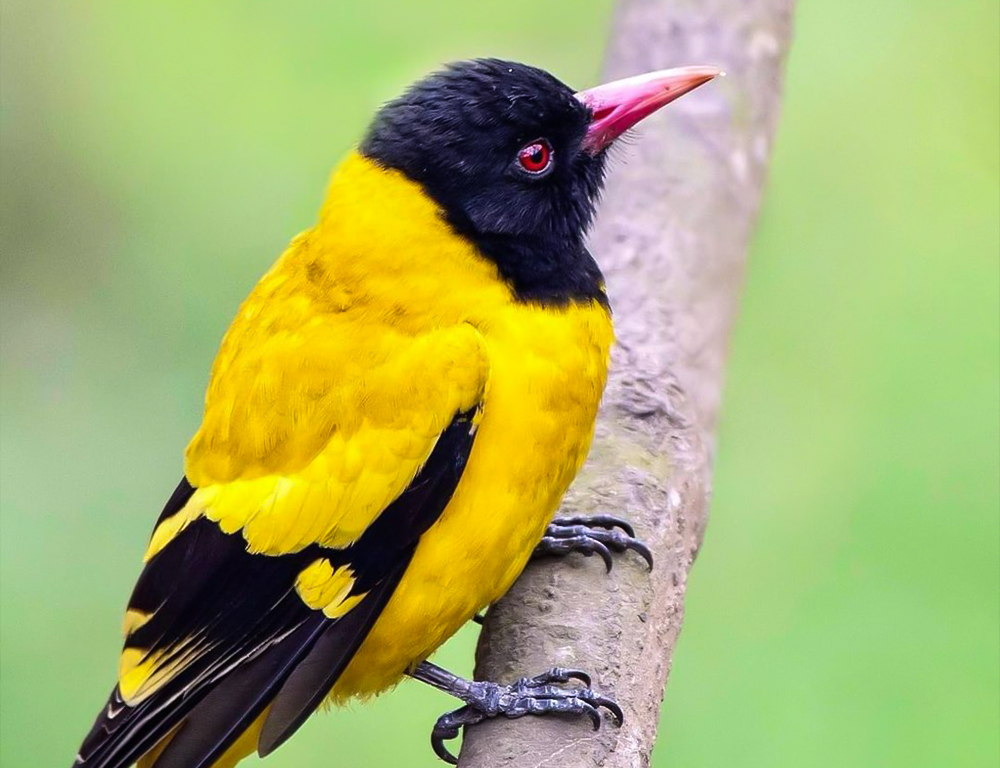
The black-hooded oriole is a type of passerine bird that belongs to the oriole family. It is a permanent resident in tropical southern Asia, ranging from India and Sri Lanka to Indonesia. This bird prefers open woodlands and areas with cultivation, such as farms or gardens.
For nesting, it builds a cup-shaped nest in a tree and lays two eggs in it. The female bird takes care of the eggs until the chicks hatch.
Once the chicks are hatched, both parents take turns in providing food and protection until they become independent enough to leave the nest.
| Kingdom | Animalia |
| Phylum | Chordata |
| Class | Aves |
| Order | Passeriformes |
| Family | Oriolidae |
| Genus | Oriolus |
| Species | O. xanthornus |
19. White-rumped Vulture
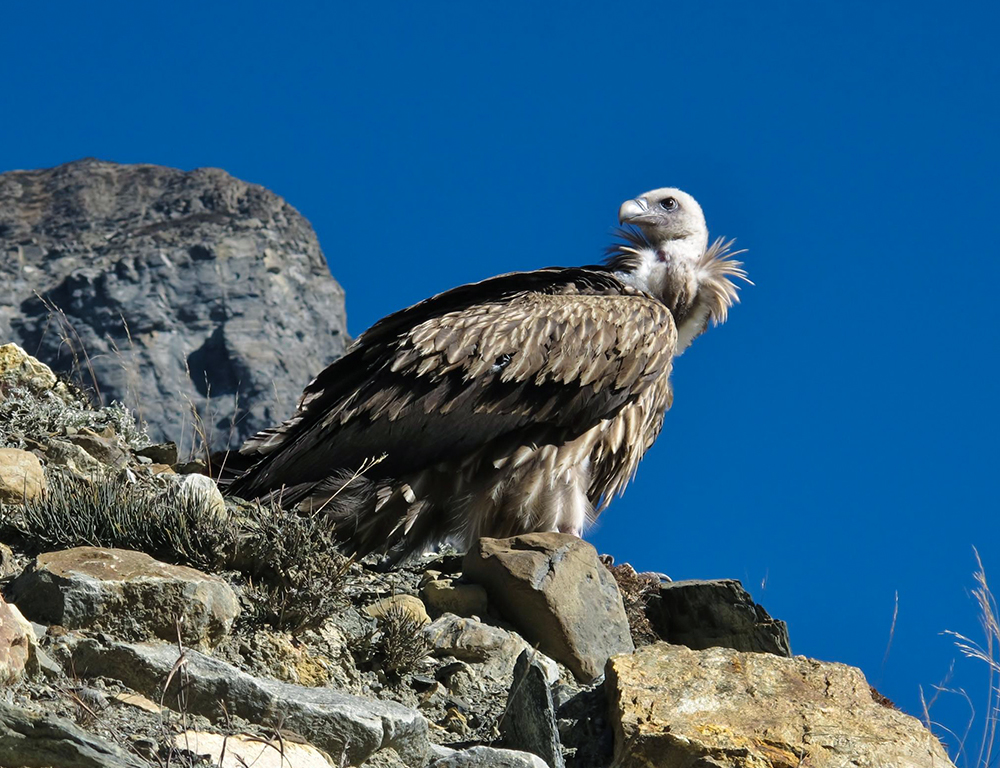
The white-rumped vulture is a species of Old World vulture that is native to South and Southeast Asia. It is considered to be critically endangered according to the IUCN Red List, due to the alarming rate at which its population has decreased over the years.
The cause of this rapid decline is the poisoning of the vultures with a drug called diclofenac. This drug is harmful to the vultures and can cause them to suffer from kidney failure and ultimately death.
To help save the white-rumped vulture from extinction, efforts have been made to stop the illegal use of diclofenac and to create more protected areas for the species to live and breed in.
Additionally, the public has been educated on the need to create a safe environment for the vultures to thrive.
| Kingdom | Animalia |
| Phylum | Chordata |
| Class | Aves |
| Order | Accipitriformes |
| Family | Accipitridae |
| Genus | Gyps |
| Species | G. bengalensis |
20. Spot-billed Pelican
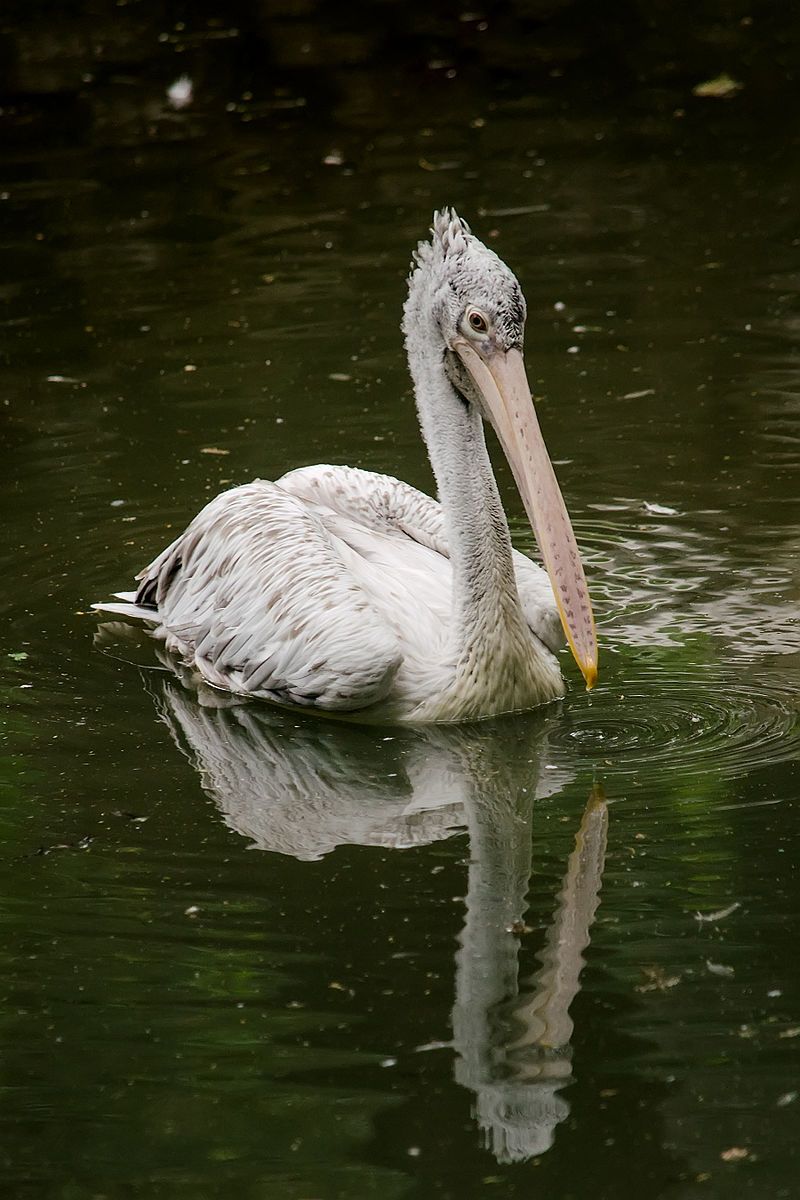
The Spot-billed Pelican, also known as the Gray Pelican, is a species of pelican found in southern Asia, ranging from southern Iran across India and down to Indonesia.
This species of pelican is an aquatic bird and is found in large inland and coastal bodies of water, such as large lakes. It is a bird that primarily breeds in these large bodies of water, and is found in these areas all year round.
It is a large bird, with a wingspan of up to 8 feet, and is characterized by its unique bill, which is marked with spots. The Spot-billed Pelican is a social bird, often seen in large flocks, and is known for its elegant flight, as well as its graceful movements in the water.
It feeds mainly on fish and is an impressive sight when it dives into the water to catch its prey. It is also a noisy bird, and its call is distinctive and easily recognizable.
The Spot-billed Pelican is an important species in its range, and its population numbers are currently stable. However, it is threatened by habitat loss, and conservation efforts are being made to ensure the long-term survival of this species.
| Kingdom | Animalia |
| Phylum | Chordata |
| Class | Aves |
| Order | Pelecaniformes |
| Family | Pelecanidae |
| Genus | Pelecanus |
| Species | P. philippensis |
21. White-throated Fantail
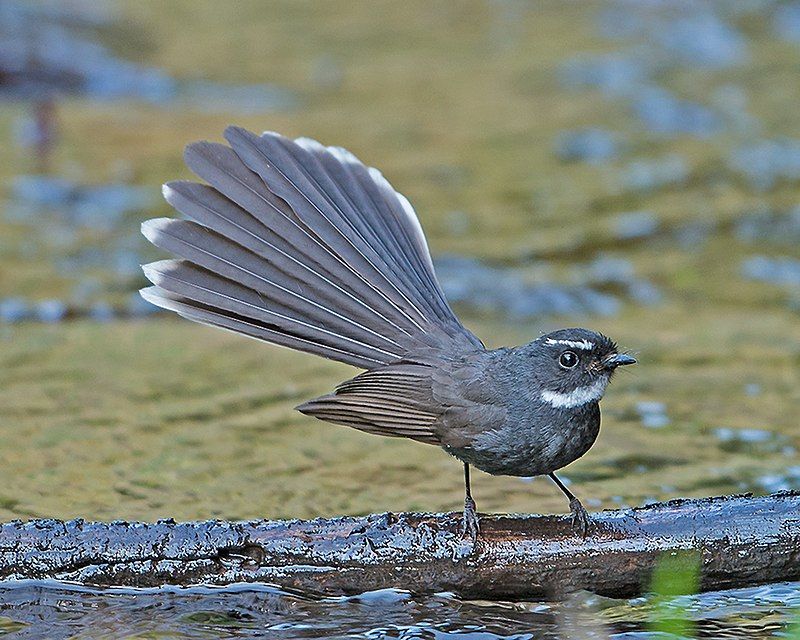
The white-throated fantail is a species of small passerine bird that is native to tropical southern Asia.
It is found in a wide range of habitats, including forests, scrub, and cultivation, and it can be found across the region stretching from the Himalayas, India, and Bangladesh to Indonesia.
This species was, until recently, considered to include the white-spotted fantail as a subspecies. However, the white-spotted fantail has since been recognized as a distinct species.
The white-throated fantail is known for its distinctive white throat, which sets it apart from other fantail species. In addition to its white throat, the white-throated fantail is also characterized by its gray body and long tail, which it uses to catch flying insects.
This species is an active forager, constantly flitting between perches and making short flights in search of food. The white-throated fantail is a widespread species, and it is not currently considered to be at risk of extinction.
| Kingdom | Animalia |
| Phylum | Chordata |
| Class | Aves |
| Order | Passeriformes |
| Family | Rhipiduridae |
| Genus | Rhipidura |
| Species | R. albicollis |
22. Grey-headed Fish Eagle
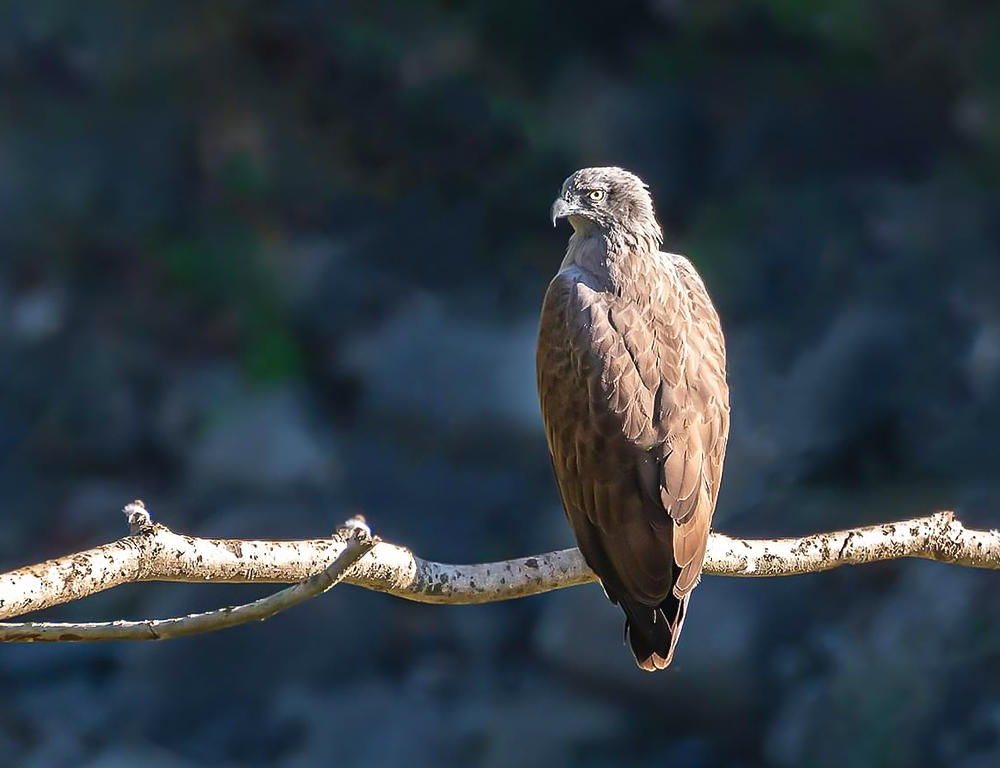
The Grey-headed Fish Eagle is a stunningly beautiful bird of prey that can be found in Southeast Asia. It is a quite large raptor that typically has a dark brown upper body, a grey head, and a lighter underbelly. Its legs are a striking white color.
Juvenile Grey-headed Fish Eagles have a paler color overall, with darker streaking. Due to its similar coloring, this bird is often mistaken for the lesser fish eagle or the Pallas’s fish eagle. However, its distinct coloring makes it quite easy to identify.
In addition to its beautiful feathers, the Grey-headed Fish Eagle is also a skilled hunter, as it is a fish-eating bird of prey. This type of bird can be seen near bodies of water such as rivers and lakes, where it searches for fish to feast on.
| Kingdom | Animalia |
| Phylum | Chordata |
| Class | Aves |
| Order | Accipitriformes |
| Family | Accipitridae |
| Genus | Icthyophaga |
| Species | I. ichthyaetus |
23. Oriental Pied Hornbill
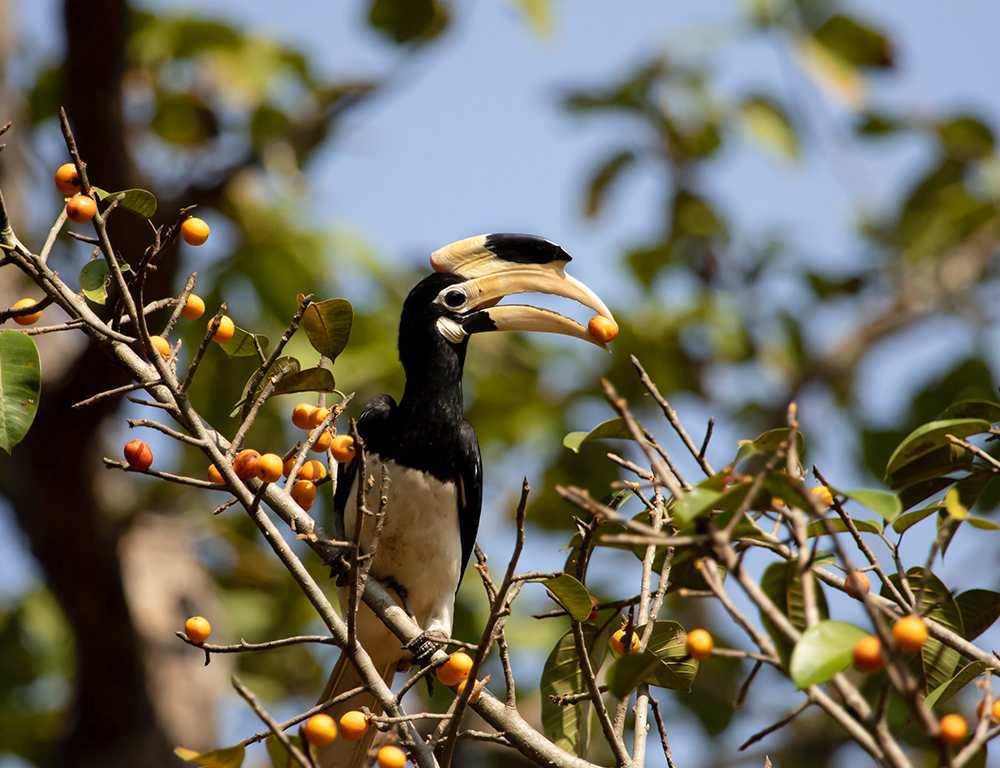
The oriental pied hornbill is a species of bird belonging to the family Bucerotidae. It is found in the Indo-Malaya region, living in the canopy of trees. It is also known by the names Sunda pied hornbill and Malaysian pied hornbill.
It is considered to be one of the smallest and most common species of Asian hornbills. The oriental pied hornbill is a large bird, with a body length of around 63 cm and a wingspan of up to 80 cm.
Its plumage is mostly black, with a white belly and a white patch on the wings and tail. The bill is black and yellow, although there is some variation depending on the individual. The oriental pied hornbill is a seed-eating bird, and it is primarily active during the day.
It feeds mostly on fruit and insects, and it can often be seen flying from tree to tree in search of food.
During the breeding season, the male and female will construct a nest in a tree cavity, with the male providing the majority of the nesting material. The oriental pied hornbill is a social species, and it can often be seen in small groups.
It is also a vocal species, and its calls can often be heard echoing through the forest. The species has a wide range, and it is not currently considered to be threatened or endangered.
| Kingdom | Animalia |
| Phylum | Chordata |
| Class | Aves |
| Order | Bucerotiformes |
| Family | Bucerotidae |
| Genus | Anthracoceros |
| Species | A. albirostris |
24. Black-naped Monarch
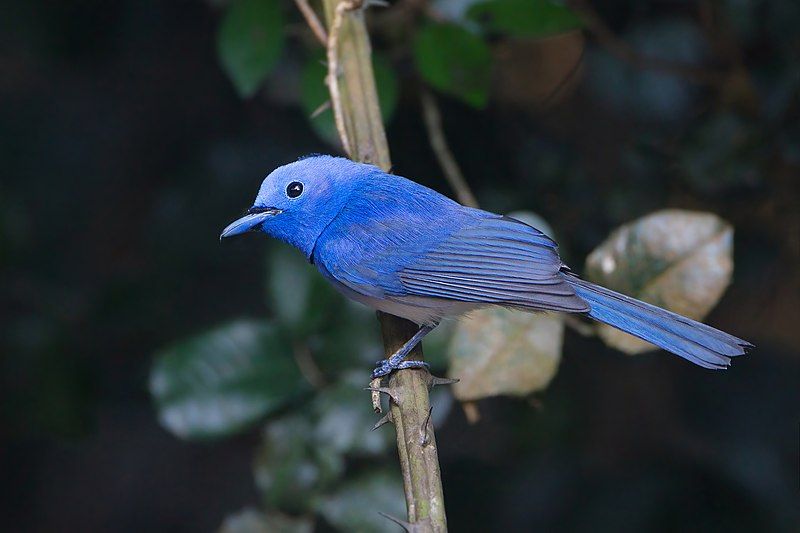
The black-naped monarch, also known as the black-naped blue flycatcher, is a slender and agile bird from the family of monarch flycatchers. This species is found in the regions of southern and southeastern Asia.
It is a passerine bird, meaning it is capable of flight and is of medium size. The black-naped monarch has a unique body shape with a long, slender body and a long, pointy tail. It has bright black and blue plumage which stands out among other birds in its habitat.
Its most distinct feature is the black patch on the back of its neck, which gives it the name black-naped monarch. This species is known to be very active and agile, often darting around trees and branches rapidly.
The black-naped monarch is a carnivorous bird, feeding mainly on insects such as flies, moths, and caterpillars. It also feeds on small fruits, berries, and occasionally eggs.
This species is very territorial and will protect its territory from intruders by using calling and chasing. The black-naped monarch is an important species in its environment, as it helps to control insect populations and disperse the seeds of fruits and berries.
It is also an important part of the local ecosystem, providing food for many other species. This species is currently listed as Least Concern by the IUCN Red List of Threatened Species.
| Kingdom | Animalia |
| Phylum | Chordata |
| Class | Aves |
| Order | Passeriformes |
| Family | Monarchidae |
| Genus | Hypothymis |
| Species | H. azurea |
25. Woolly-necked Stork
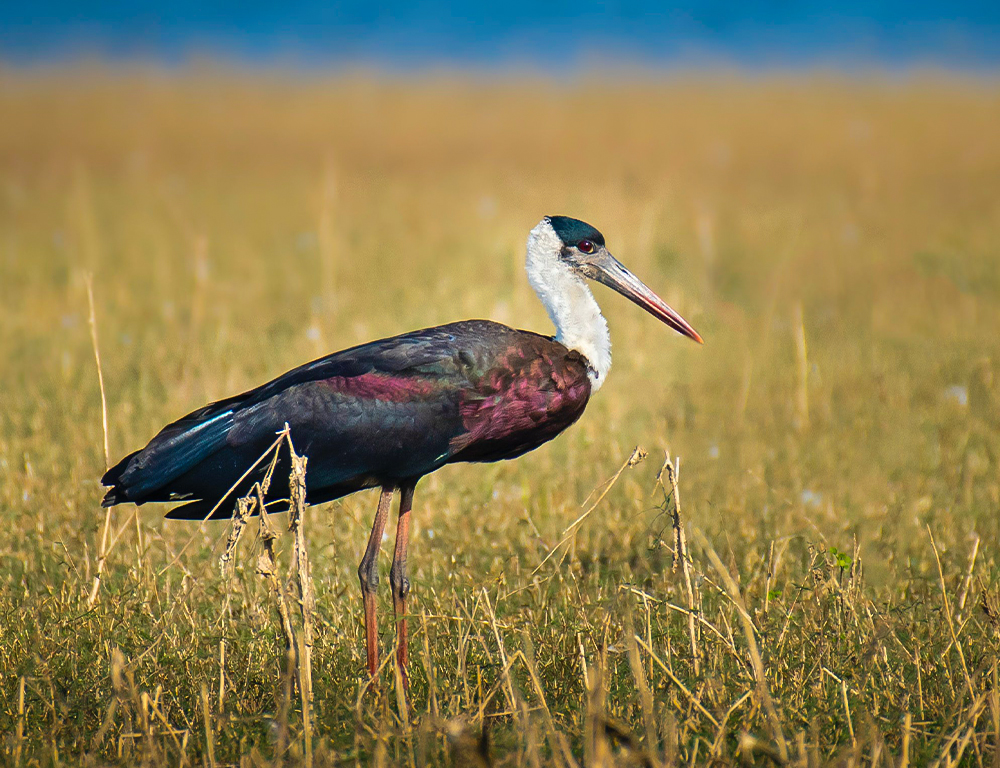
The Asian woolly-necked stork is a large wading bird found in many parts of Asia. It is a member of the Ciconiidae family of storks and typically breeds either alone or in small, loose colonies.
This species can be found in a wide variety of habitats, such as marshes, forests, agricultural areas, and freshwater wetlands. This wide distribution means that the Asian woolly-necked stork can adapt to many different types of environments.
The Asian woolly-necked stork has adapted well to its various habitats and can survive in a variety of conditions. For example, it can find food in both marshes and agricultural areas, making it highly adaptable.
Furthermore, the bird is also able to make use of various types of wetlands to find safe places to breed and rest. This allows the species to not only spread across Asia but also thrive wherever it is found.
In conclusion, the Asian woolly-necked stork is an impressive species that can live and thrive across a wide range of habitats. Its adaptability and wide distribution make it a fascinating species to observe and learn about.
| Kingdom | Animalia |
| Phylum | Chordata |
| Class | Aves |
| Order | Ciconiiformes |
| Family | Ciconiidae |
| Genus | Ciconia |
| Species | C. episcopus |
26. Pallas’s fish eagle
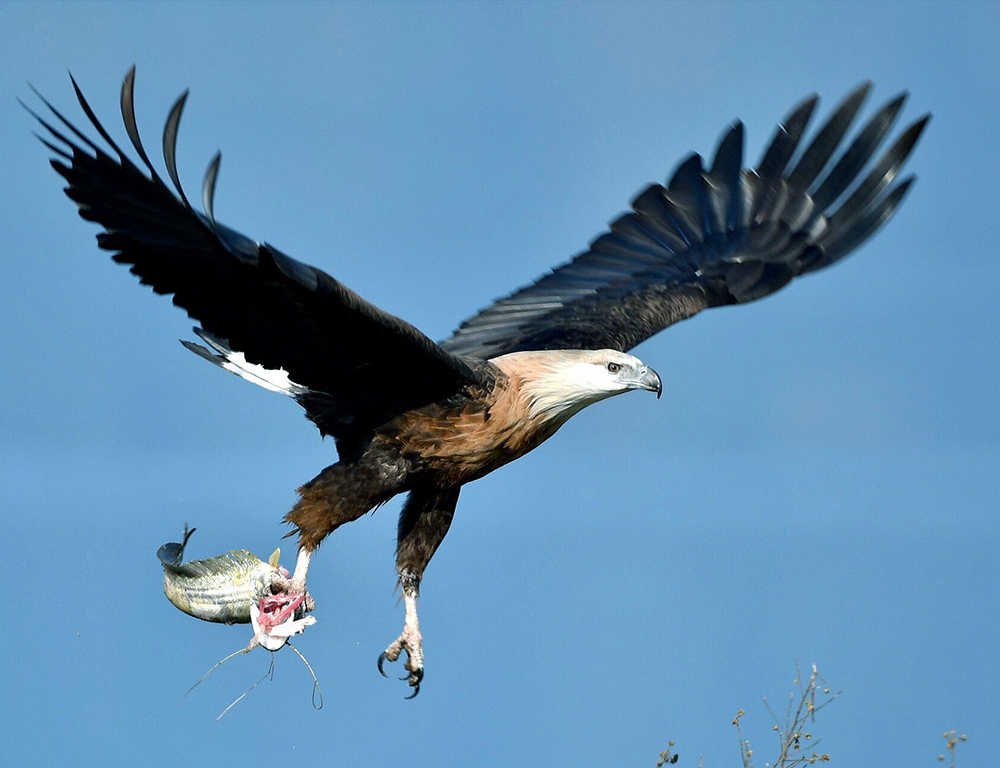
Pallas’s fish eagle, also known as Pallas’s sea eagle or band-tailed fish eagle, is a large, brownish sea bird that is found in the east Palearctic region.
This species is native to Kazakhstan, Russia, Tajikistan, Turkmenistan, Uzbekistan, Mongolia, China, India, Nepal, Bangladesh, Myanmar, and Bhutan.
It is listed as Endangered on the IUCN Red List due to its declining population. Pallas’s fish eagle is a large, powerful-looking bird with a wingspan of up to 1.8 meters. Its body is mostly brown, with a white head and a white tail with a black band.
It has long, powerful legs and talons that are used for hunting and fishing. The species mainly eat fish, but will also hunt other birds, small mammals, and even carrion. Pallas’s fish eagle is an important species in many of the countries it is found in.
It is a symbol of strength and power and is an indicator of the health of the natural environment. Unfortunately, habitat loss, pollution, and overhunting are all taking a toll on the species.
The IUCN Red List has classified it as Endangered, and it is up to us to make sure that this species does not go extinct.
| Kingdom | Animalia |
| Phylum | Chordata |
| Class | Aves |
| Order | Accipitriformes |
| Family | Accipitridae |
| Genus | Haliaeetus |
| Species | H. leucoryphus |
27. Indian Roller
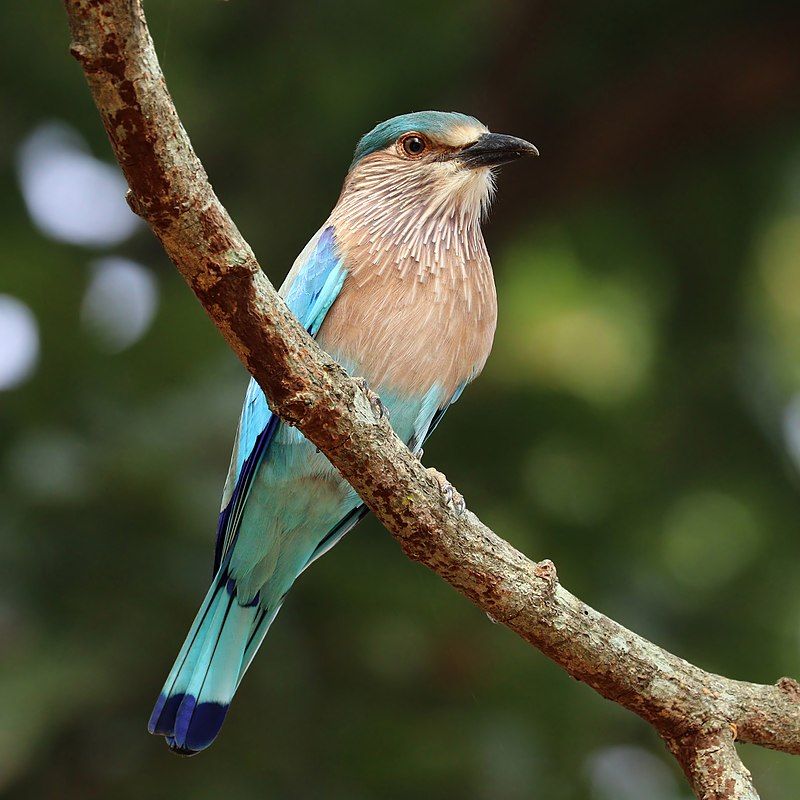
The Indian roller is a member of the Coraciidae family of birds. It is a medium-sized bird, measuring between 30 and 34 cm in length and having a wingspan of 65 to 74 cm. It weighs between 166 and 176 grams.
The face and throat of the Indian roller are pinkish, while the head and back are brown. The bird has blue feathers on its rump, and its wings and tail feature a mix of light and dark blue feathers, creating a striking contrast.
Overall, the Indian roller is a beautiful bird with colorful and unique plumage.
| Kingdom | Animalia |
| Phylum | Chordata |
| Class | Aves |
| Order | Coraciiformes |
| Family | Coraciidae |
| Genus | Coracias |
| Species | C. benghalensis |
28. Great Hornbill
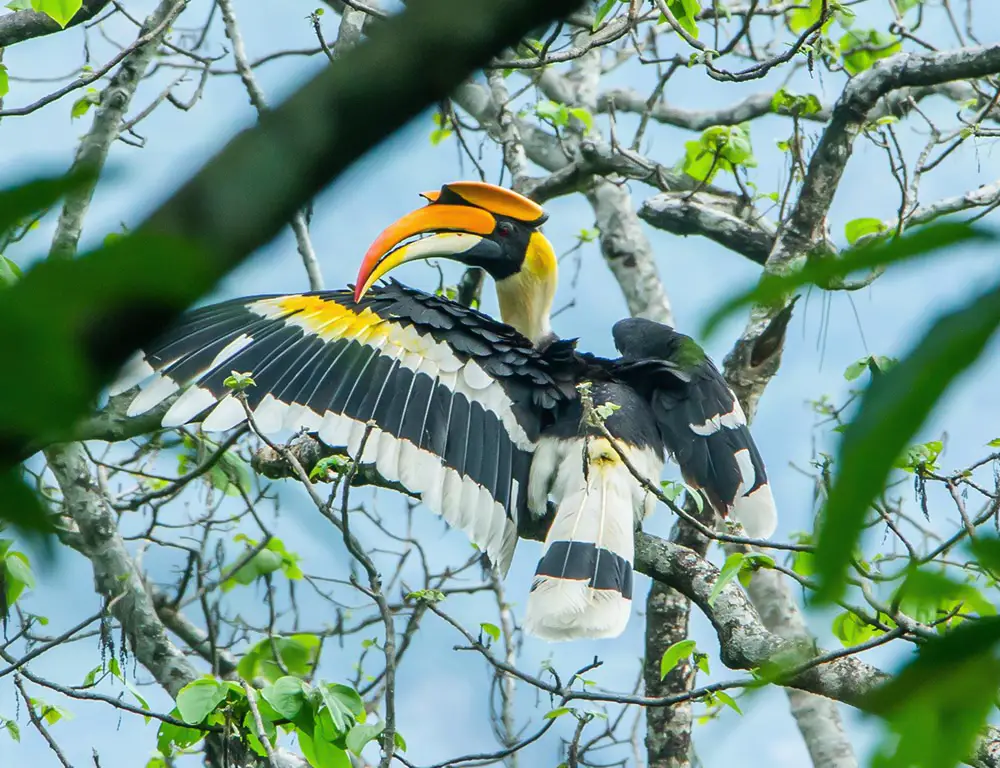
The great hornbill is a large species of bird, belonging to the hornbill family. It is native to the Indian subcontinent and Southeast Asia, where it makes its home in tropical forests.
This majestic bird is easily identified by its concave casque, a large, curved plate of bone that sits atop its beak. The great hornbill is mainly a fruit-eater, but will also feed on other small animals such as mammals, reptiles, and birds.
It has a long, curved beak, ideal for plucking fruit from trees. It also has powerful talons, which it uses to catch and kill its prey. This species of hornbill is an important part of its local ecosystem, playing a key role in seed dispersal.
The great hornbill swallows fruit whole and excretes the seeds in its droppings, helping to spread plants across its range.
It is also a popular subject of art and mythology, with its striking appearance and powerful wings inspiring many cultures to create stories and artwork around it. The great hornbill is an unmistakable bird and one which is of great importance to its local environment.
Its amazing appearance and behavior make it a fascinating species, and one which continues to captivate people all over the world.
| Kingdom | Animalia |
| Phylum | Chordata |
| Class | Aves |
| Order | Bucerotiformes |
| Family | Bucerotidae |
| Genus | Buceros |
| Species | B. bicornis |
29. Grey-headed Woodpecker
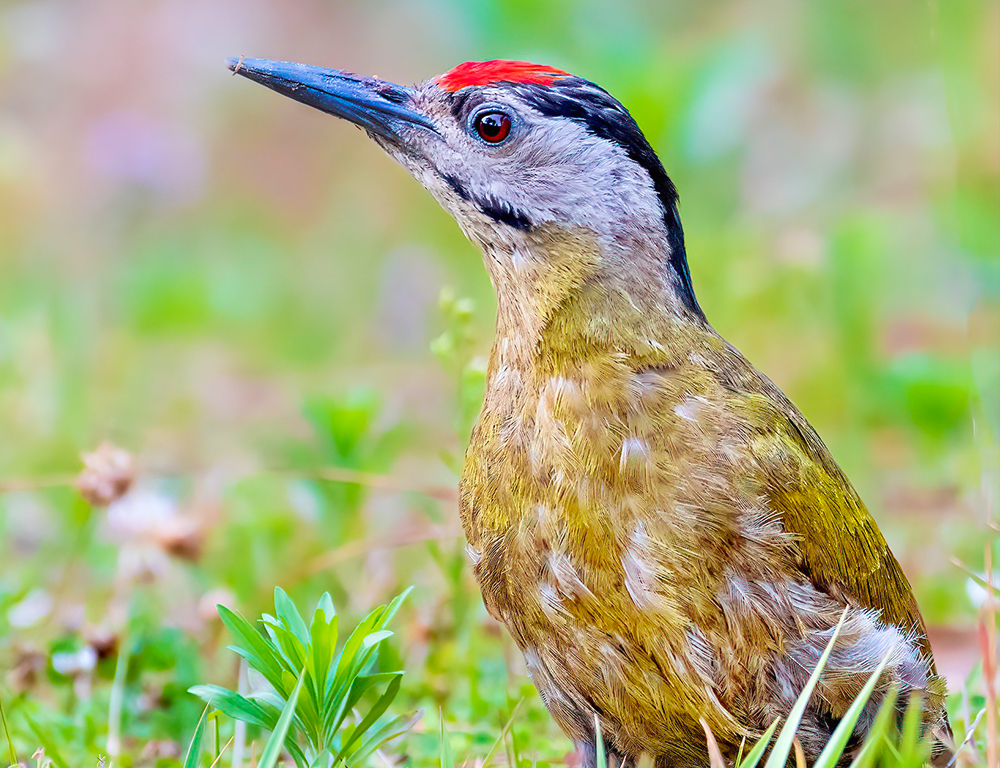
The grey-headed woodpecker is a species of woodpecker belonging to the family Picidae. This bird is found in Eurasia and is known also as the grey-faced woodpecker.
It is one of three closely related species found in Europe, with the other two being the European green woodpecker and the Iberian green woodpecker. The grey-headed woodpecker is medium-sized, with a grey head, black and white barred wings, and a white belly.
It has a pinkish-red face, which is what distinguishes it from the other two species. Its diet is mainly insects, but it will also eat fruits and seeds. This species is found in woodlands, parks, and gardens, where it nests in trees and feeds on tree trunks.
It is known to make a loud, rattling call, which can often be heard in the early morning or late evening when it is foraging. It can also be found in open fields and meadows, where it feeds on ants and other insects.
The grey-headed woodpecker is an important species in the ecosystem, as it helps to control insect populations and encourages the growth of new trees. Its presence also provides a source of food for other species, such as hawks and owls.
It is an important part of the European woodpecker family, and its conservation is essential for the maintenance of healthy woodlands.
| Kingdom | Animalia |
| Phylum | Chordata |
| Class | Aves |
| Order | Piciformes |
| Family | Picidae |
| Genus | Picus |
| Species | P. canus |
30. Speckled Piculet
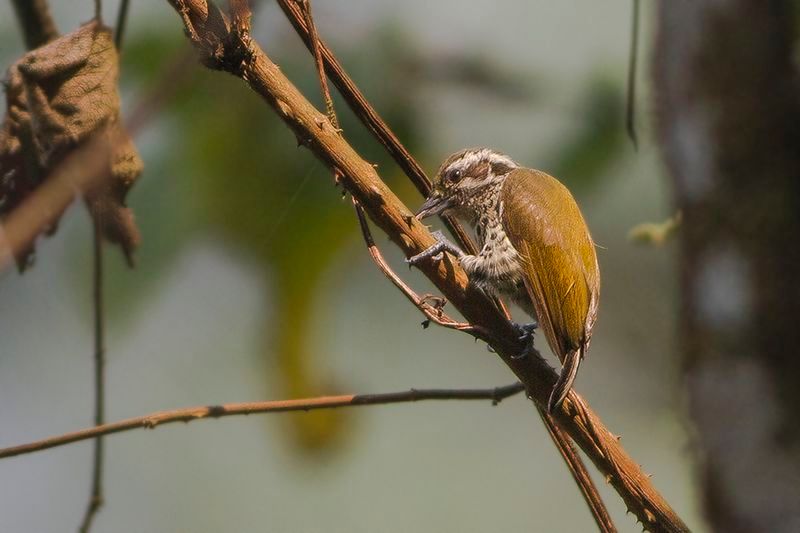
The Speckled Piculet is a species of bird belonging to the Picidae family. It was first described by British ornithologist J.H. Burton in 1836. The bird is small in size, measuring around 11 cm in length, with a wingspan of around 17 cm.
It has a greyish-brown plumage, with white spots on the back and wings. Its bill is black, and its eyes are yellow. The Speckled Piculet is found in the tropical regions of Central and South America, ranging from Mexico to Bolivia and Brazil.
It usually resides in humid forests, where it feeds on insects such as ants, beetles, and caterpillars.
It is a solitary species, often seen perched on tree branches and foraging on the ground. The Speckled Piculet is not considered to be threatened, and its population is believed to be stable.
However, its habitat is threatened by deforestation, and conservation efforts are needed to protect this species and its habitat.
| Kingdom | Animalia |
| Phylum | Chordata |
| Class | Aves |
| Order | Piciformes |
| Family | Picidae |
| Genus | Picumnus |
| Species | P. innominatus |
31. Brown Boobook
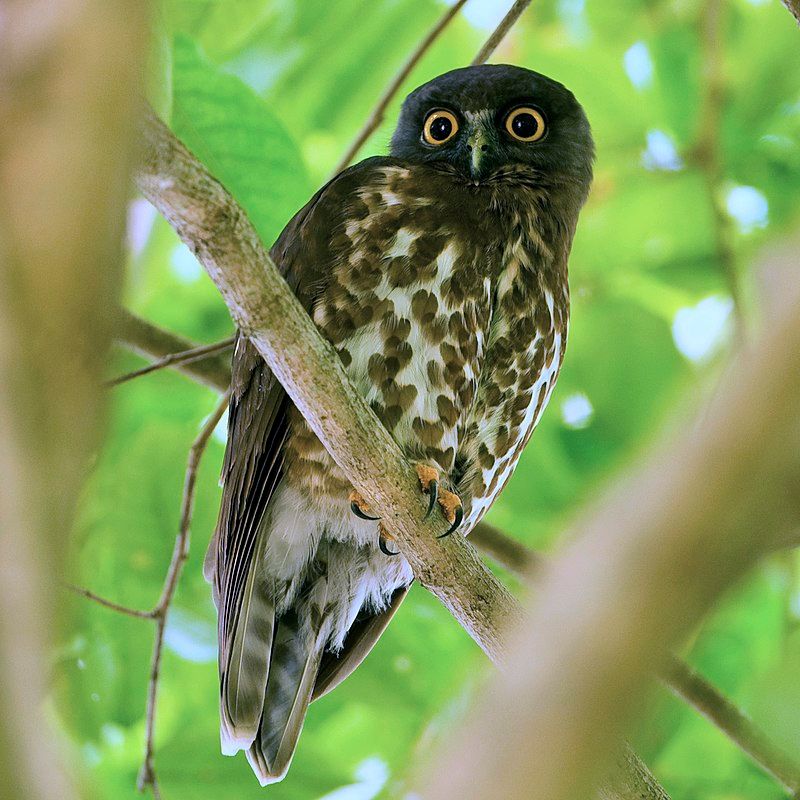
The brown boobook, also known as the brown hawk owl, is a type of owl that is commonly found in southern Asia. It is native to India, Sri Lanka, Bangladesh, Nepal, western Indonesia, and south China.
The brown boobook belongs to the Strigidae family of owls, which is also known as the “typical owls.” This family consists of most of the species of owls living today. The brown boobook is about the size of a small hawk and is mostly brown.
Its eyes are yellow and its bill is black. Its wings are relatively long and narrow, and it has a white patch on the lower back. This species is mainly solitary and is active only during the night.
It usually feeds on smaller animals such as lizards, mice, and some insects. The brown boobook is a fairly common species with a wide distribution and is not considered to be at risk of extinction.
However, its population is declining due to habitat loss and degradation, as well as hunting and trapping. Conservation efforts are being made to protect this species and its habitat.
| Kingdom | Animalia |
| Phylum | Chordata |
| Class | Aves |
| Order | Strigiformes |
| Family | Strigidae |
| Genus | Ninox |
| Species | N. scutulata |
32. Jungle Myna
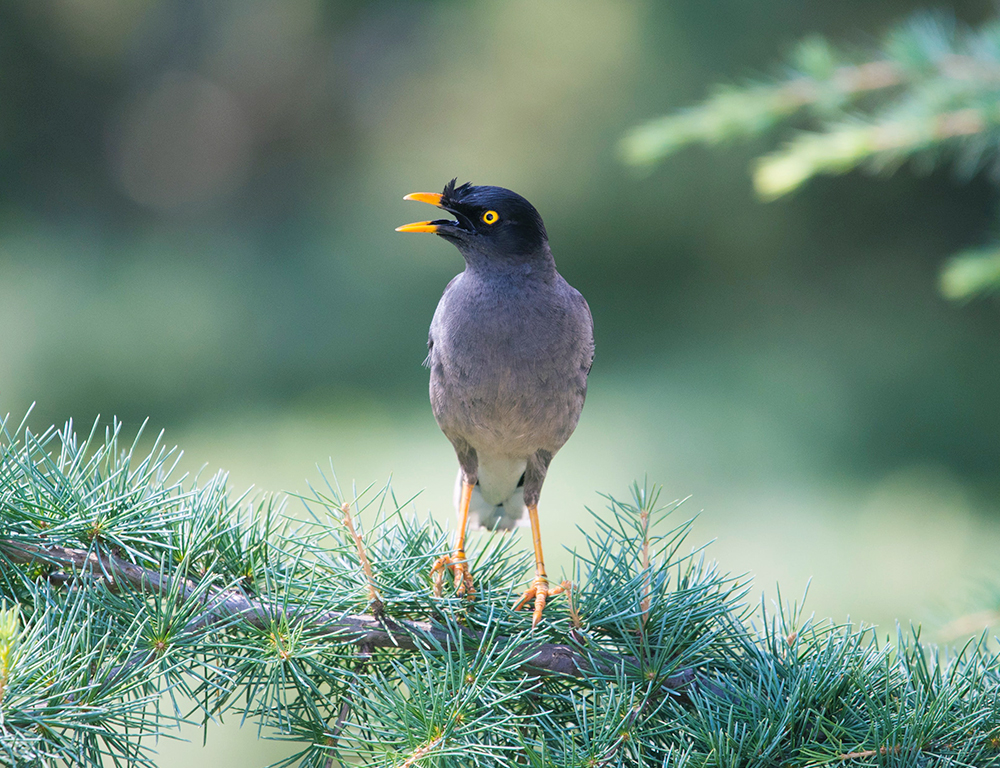
The jungle myna is a species of bird belonging to the starling family. It has a patchy distribution across much of the Indian Subcontinent, with its range extending from India to Bangladesh, Nepal, Bhutan, and Sri Lanka.
The species is most commonly found in moist, tropical forests, although it can also inhabit scrublands and agricultural areas. It is absent from India’s arid zones, where the lack of water and trees makes it difficult for the species to survive.
The jungle myna is a large, black bird with a yellow bill, yellow shoulder patch, and white-tipped tail feathers. Its call is a loud, liquid “keen-ah,” and it is known to form large flocks, sometimes joining other species of mynas.
It is an omnivorous species and feeds on fruits, insects, nectar, and carrion. It has also been observed foraging in the company of other birds, such as parakeets and bulbuls. The jungle myna is a highly social species and is often seen in large, noisy flocks.
It plays an important role in the ecology of its habitat, dispersing seeds and controlling pest populations. Its presence is considered an indicator of healthy, intact ecosystems.
Unfortunately, the species is threatened by habitat destruction and human disturbance, particularly in agricultural areas. Conservation efforts are necessary to ensure the survival of the jungle myna.
| Kingdom | Animalia |
| Phylum | Chordata |
| Class | Aves |
| Order | Passeriformes |
| Family | Sturnidae |
| Genus | Acridotheres |
| Species | A. fuscus |
33. Crested Serpent Eagle
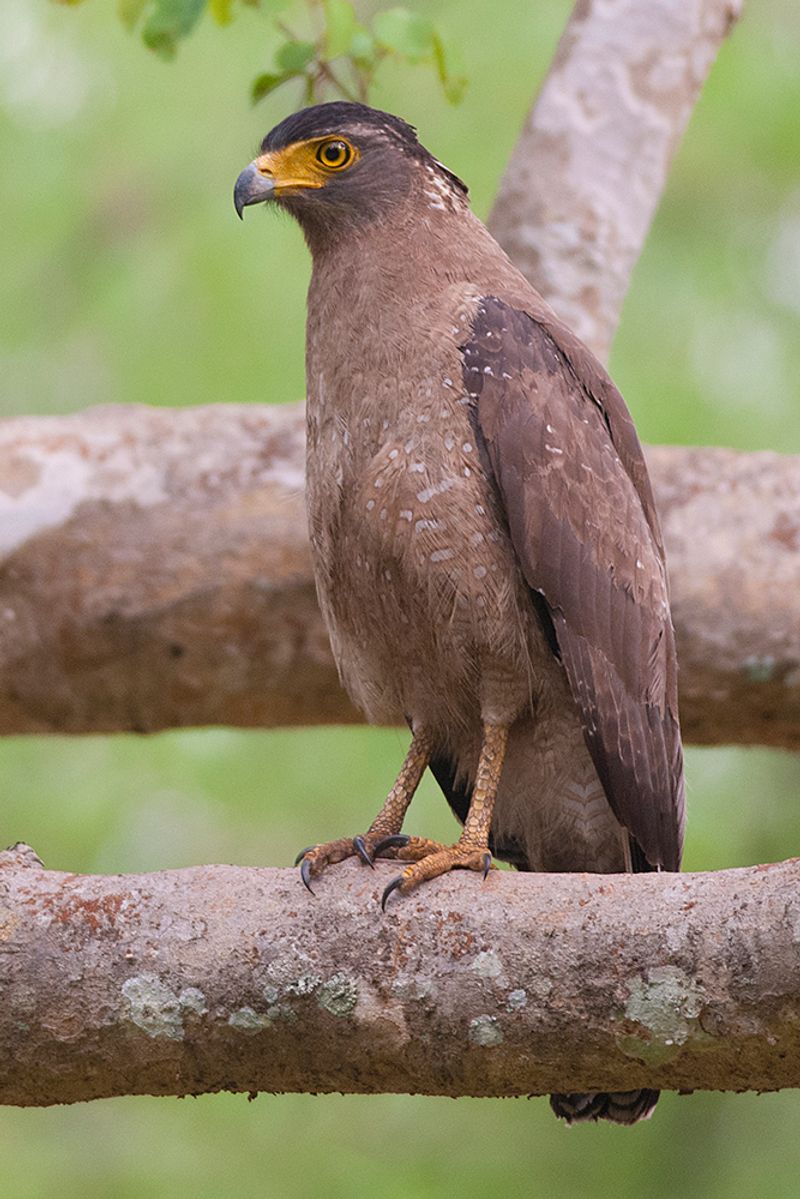
The crested serpent eagle is a powerful and graceful bird of prey that is native to tropical Asian forests. With its striking black, white, and brown plumage, the crested serpent eagle is a sight to behold.
It has a broad wingspan and a long tail that helps it maneuver through dense foliage. The crested serpent eagle is a medium-sized bird, measuring an average of 23 inches in length.
It typically weighs between 1.5 and 2.4 pounds. The crested serpent eagle is an opportunistic hunter that feeds on a variety of small birds, reptiles, and mammals. It has powerful talons and sharp eyesight, which enables it to spot its prey from far away.
Its diet also includes carrion, which it can detect from a distance due to its strong sense of smell. The crested serpent eagle nests in trees, usually in the upper canopy. The female eagle will lay two to three eggs and will incubate them for around 45 days.
The chicks will fledge in about two months but will remain dependent on the parents for an additional two months. The crested serpent eagle is currently listed as “Near Threatened” by the IUCN due to habitat loss and continued hunting.
Conservation efforts are underway in some parts of its range to help protect this magnificent bird of prey.
| Kingdom | Animalia |
| Phylum | Chordata |
| Class | Aves |
| Order | Accipitriformes |
| Family | Accipitridae |
| Genus | Spilornis |
| Species | S. cheela |
34. Large-tailed Nightjar
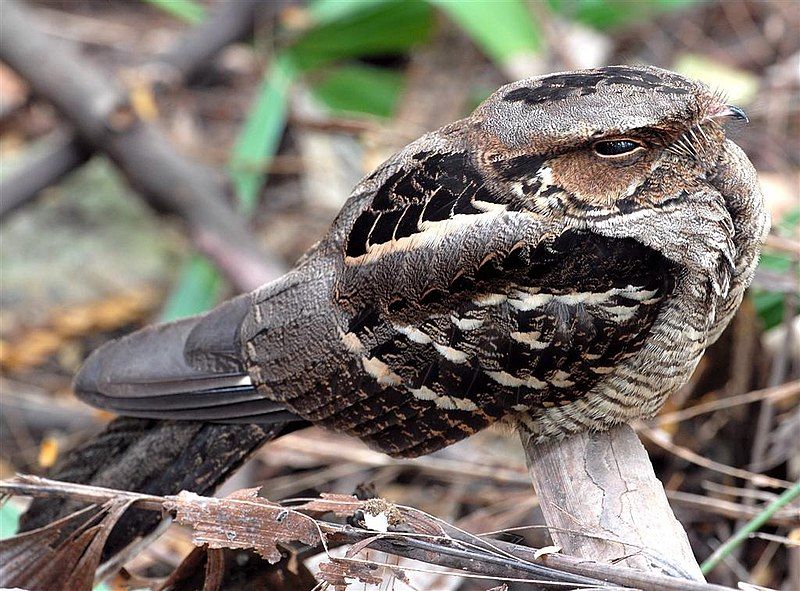
The large-tailed nightjar is a species of nightjar found in the family Caprimulgidae. It is a nocturnal bird, mainly active during the night, that is found in various regions around the world.
It is found in the southern Himalayan foothills, eastern South Asia, Southeast Asia, and northern Australia. It is a medium-sized nightjar, with a length of around 24-26 cm and a wingspan of about 45 cm.
Its plumage is mainly grey-brown with black and white barring on its wings and tail. It has long, pointed wings and a long, forked tail, which gives it its name. Its diet consists of small insects, which it catches by flying low over the ground.
It nests on the ground in open areas, such as grasslands or open woodland. Its main call is a loud, harsh “churr-churr-churr” that is repeated several times. The large-tailed nightjar is an important species in its various habitats, helping to keep insect populations in check.
| Kingdom | Animalia |
| Phylum | Chordata |
| Class | Aves |
| Clade | Strisores |
| Order | Caprimulgiformes |
| Family | Caprimulgidae |
| Genus | Caprimulgus |
| Species | C. macrurus |
35. White-throated Kingfisher
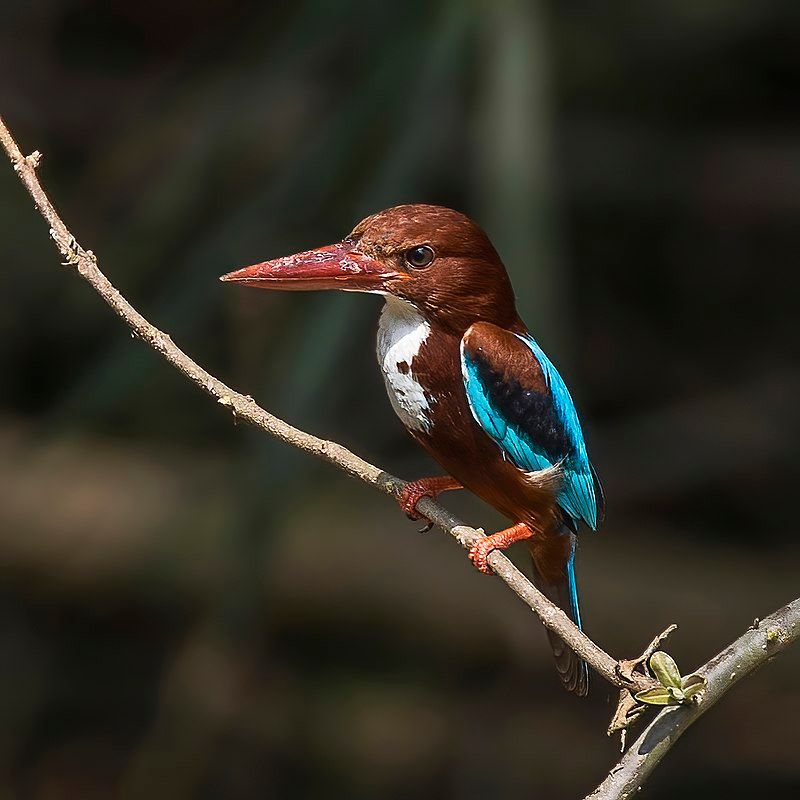
The white-throated kingfisher, otherwise known as the white-breasted kingfisher, is a type of tree kingfisher that is found in parts of Asia. Its range stretches from the Sinai region in the west to China and Indonesia in the east.
This species of kingfisher is mainly a resident bird, meaning that it usually stays in the same area rather than migrating. However, some populations may travel over shorter distances for certain periods of time.
The white-throated kingfisher is a medium-sized bird, usually measuring around 27 cm in length. It is mainly bright blue and orange in color, with a bright white throat and breast. Its beak is black and stout, and its legs are dark gray.
This species of kingfisher feeds mainly on fish, frogs, and other small animals. The white-throated kingfisher is usually seen perching on low branches or wires, from which it scans the ground for prey.
When it spots a potential meal, it will swoop down with great speed and snatch it up. It will then return to its perch and beat its prey against a hard surface before eating it.
This species of kingfisher is not considered to be threatened, although its population is decreasing in some areas due to habitat destruction. It is still quite a widespread species, however, and can be found over much of its range in Asia.
| Kingdom | Animalia |
| Phylum | Chordata |
| Class | Aves |
| Order | Coraciiformes |
| Family | Alcedinidae |
| Genus | Halcyon |
| Species | H. smyrnensis |
36. Siberian Rubythroat
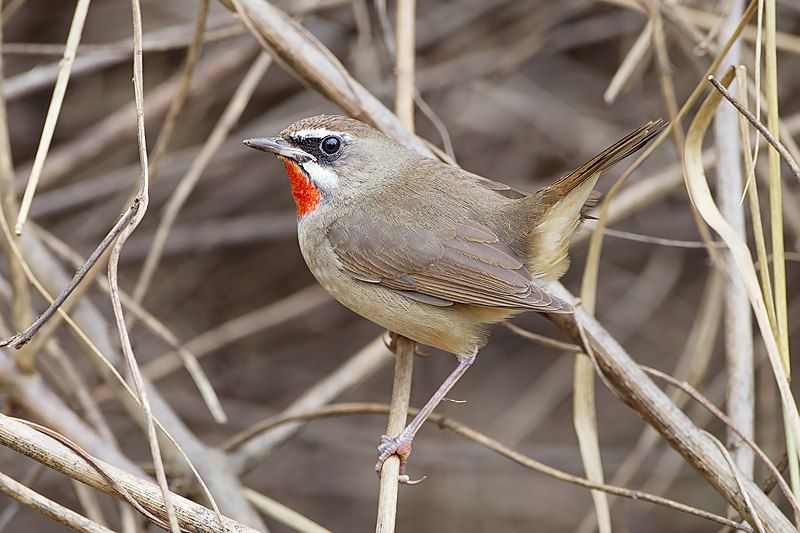
The Siberian rubythroat is a species of small passerine bird that belongs to the order Passeriformes. It was first described by the German naturalist Peter Simon Pallas in 1776. Until recently, it was generally classified as a member of the thrush family, Turdidae.
However, recent taxonomic research has indicated that this species is more closely related to the Old World flycatchers of the family Muscicapidae. The Siberian rubythroat is a small bird, measuring between 11 and 12 cm in length. It has a stocky body and a short, rounded tail.
Its plumage is mostly greyish-brown, with a distinctive red throat patch and a white eyebrow. Males and females have similar plumage.
It is found in open woodlands and meadows in Siberia and parts of northern and central Europe. The Siberian rubythroat feeds mainly on insects, but will also take some berries and seeds. It typically forages by perching on a branch and then swooping down to capture its prey.
Breeding typically takes place between April and July, with the female laying 3-5 eggs in a nest built on the ground or in a low tree. The female incubates the eggs and both parents feed the young.
The Siberian rubythroat is a common species and is considered to be of least concern by the IUCN. Its population is believed to be stable, although it is vulnerable to habitat loss and other human-related disturbances.
| Kingdom | Animalia |
| Phylum | Chordata |
| Class | Aves |
| Order | Passeriformes |
| Family | Muscicapidae |
| Genus | Calliope |
| Species | C. calliope |
37. Pied Kingfisher
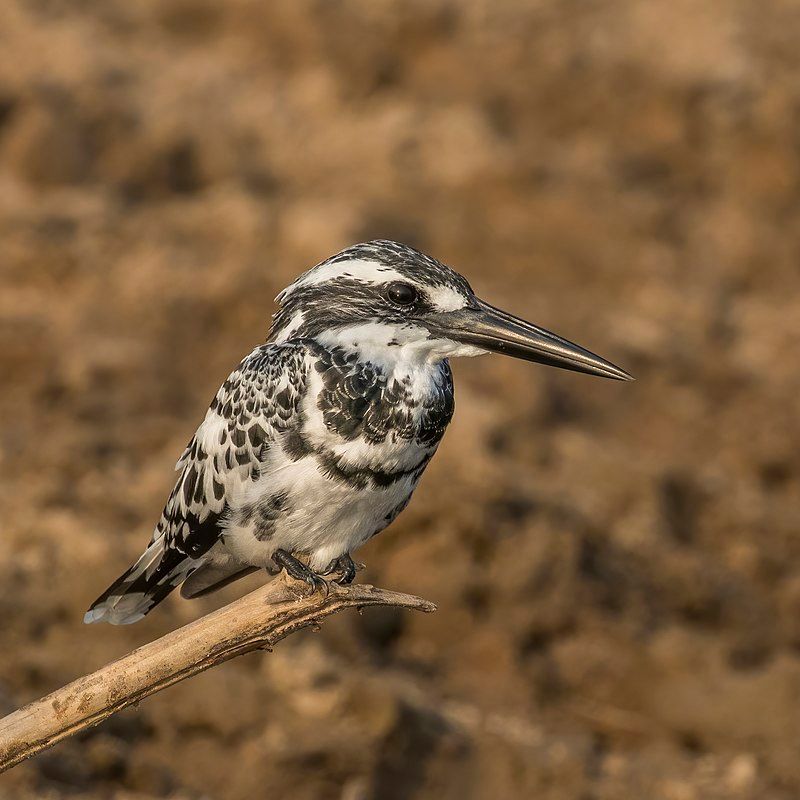
The pied kingfisher is a species of water kingfisher that is found widely throughout Africa and Asia. It was first identified and described by the Swedish scientist Carl Linnaeus in 1758.
This species is divided into five recognized subspecies, each of which has its distinct physical characteristics. For example, some have wider beaks than others, some have longer tails, and some have more vibrant colors.
These subspecies inhabit different habitats and have adapted to their local environment. For example, the African subspecies are found in wetlands, while the Asian subspecies are found in rivers.
Although the pied kingfisher is found across large areas of the world, its population is threatened due to habitat loss, pollution, and the introduction of invasive species.
| Kingdom | Animalia |
| Phylum | Chordata |
| Class | Aves |
| Order | Coraciiformes |
| Family | Alcedinidae |
| Genus | Ceryle |
| Species | C. rudis |
38. Dusky Warbler
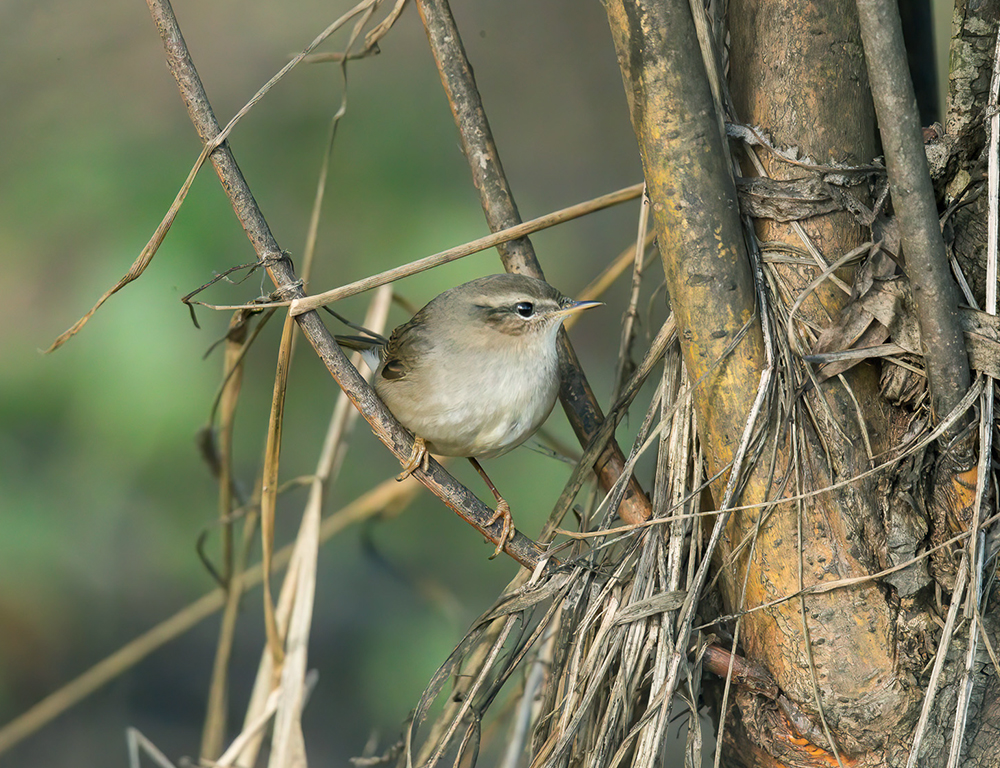
The dusky warbler is a species of leaf warbler that breeds in the east Palearctic region. It derives its genus name, Phylloscopus, from two Ancient Greek words, pull on meaning “leaf” and skopos meaning “seeker”.
The specific name, fuscatus, is from Latin and translates to “dark”. This species of warbler is highly migratory and spends the winter in South Asia and Southeast Asia. These birds have a distinctively dark coloration which likely inspired the Latin name fuscatus.
The dusky warblers mainly feed on insects which they hunt for by foraging through trees and shrubs. They prefer to breed and nest in dense forests, often near the ground. When winter arrives, they migrate south to warmer climates in South Asia and Southeast Asia.
During their migration, they often travel through the night and rest during the day. The dusky warbler is an important species in the East Palearctic ecosystem as it helps to keep the insect populations in check.
They also provide an important food source for other predator species, such as birds of prey.
| Kingdom | Animalia |
| Phylum | Chordata |
| Class | Aves |
| Order | Passeriformes |
| Family | Phylloscopidae |
| Genus | Phylloscopus |
| Species | P. fuscatus |
39. Plain Prinia
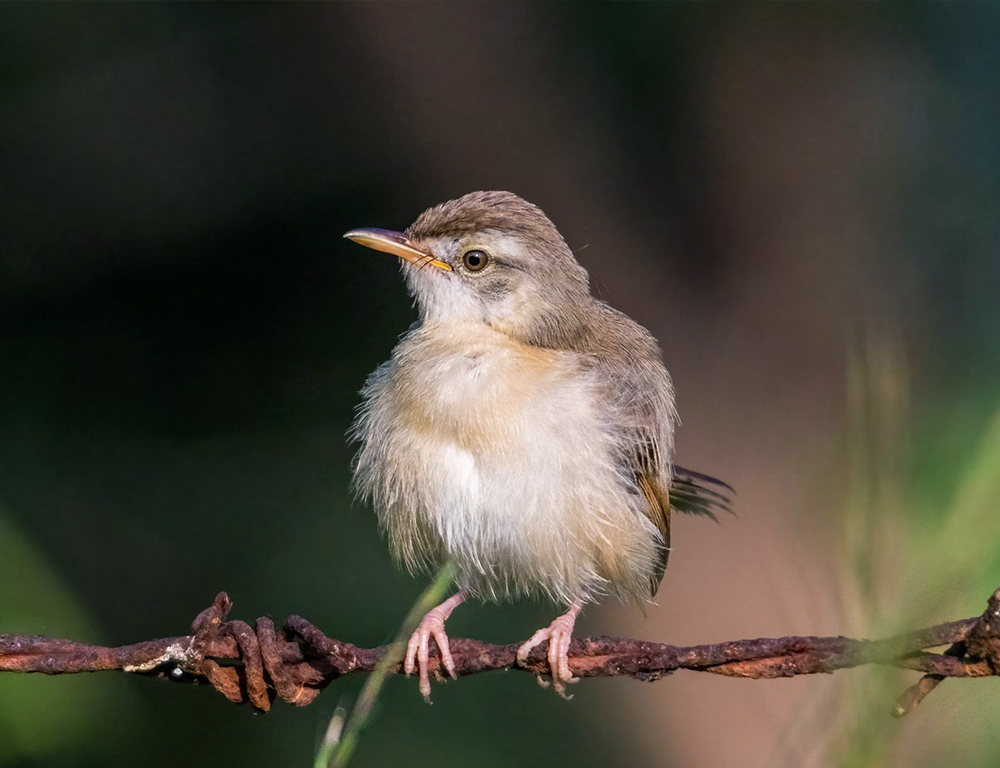
The Plain Prinia is a small bird belonging to the cisticolid warbler family and is native to Southeast Asia. It is also referred to as the Plain Wren-Warbler or White-Browed Wren-Warbler and is found in countries such as Pakistan, India, South China, and Southeast Asia.
It is a resident breeder and does not migrate. Before its identification as a separate species, it was classified in the same group as the Tawny-Flanked Prinia, which is found in Africa south of the Sahara.
The Plain Prinia is a slender bird with a pale grey upper body, white underparts, and a white eyebrow. It is usually found in open grasslands and scrub or secondary-growth forests, where it feeds on insects.
The bird breeds between March and June when it builds a cup-shaped nest in dense vegetation. It is a social species and is often found in small flocks or pairs. It is also known for its distinctive call, a high-pitched “tsee-tsee-tsee”.
The Plain Prinia is classified as a species of Least Concern by the International Union for Conservation of Nature. Its population is believed to be stable, although there are some threats from habitat destruction due to urbanization and agricultural expansion.
Conservation efforts have been put in place to protect the species and its habitats and to ensure that its population continues to remain stable.
| Kingdom | Animalia |
| Phylum | Chordata |
| Class | Aves |
| Order | Passeriformes |
| Family | Cisticolidae |
| Genus | Prinia |
| Species | P. inornata |
40. Ruddy-breasted Crake
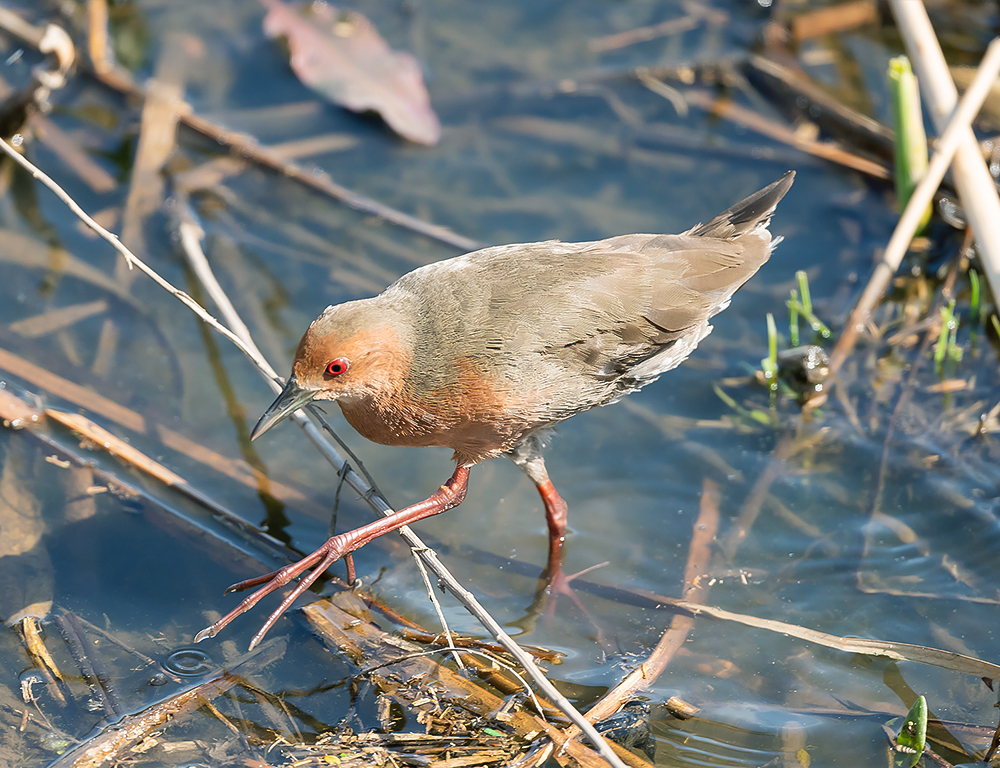
The Ruddy-breasted Crake, also known as the Ruddy Crake, is a species of bird belonging to the rail and crake family Rallidae. This species is found in a variety of wet habitats, primarily in the South Asia region.
Its natural range spans from the Indian subcontinent, east to south China, Japan, and Indonesia. The Ruddy-breasted Crake prefers wetland areas such as swamps, marshes, and shallow ponds.
It can also be found in wet grasslands and along the edges of lakes. This bird species is characterized by its reddish-brown coloration and distinctive white markings on its wings and tail. It has a long, slim body and its legs are a grayish-green color.
The Ruddy-breasted Crake feeds primarily on insects, small crustaceans, and other invertebrates. It also eats seeds, berries, and other plant matter. The Ruddy-breasted Crake is monogamous and usually mates for life.
The female lays between three to five eggs in a nest that is typically made up of dead vegetation, which is constructed on the ground or in shallow water.
Both parents help to incubate the eggs and care for the young. The Ruddy-breasted Crake is listed as a species of least concern by the International Union for Conservation of Nature.
Although its population is declining in certain areas, it is still faring well overall and its numbers are not considered to be threatened.
| Kingdom | Animalia |
| Phylum | Chordata |
| Class | Aves |
| Order | Gruiformes |
| Family | Rallidae |
| Genus | Zapornia |
| Species | Z. fusca |
41. Paddyfield Pipit
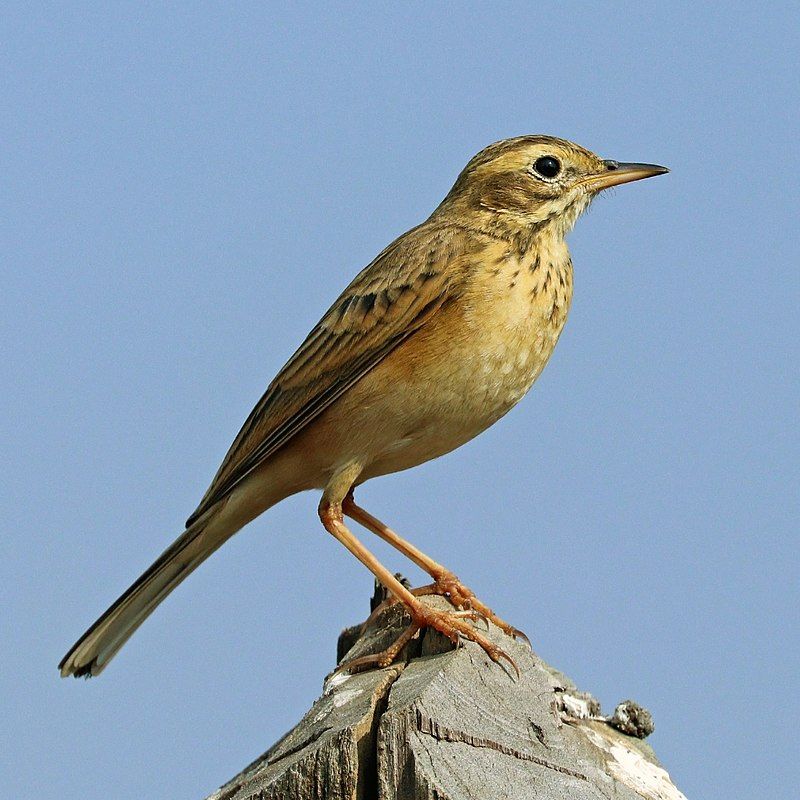
The Paddyfield Pipit, also known as the Oriental Pipit, is a small bird belonging to the Passeres bird family. It is native to southern Asia, and its range extends east to the Philippines.
It is a non-migratory species, and it breeds in open areas such as scrubs, grasslands, and cultivated lands. The Paddyfield Pipit is a small bird, with a length of around 16 cm. Its upperparts are brownish-olive in color, while its underparts are white.
It has a distinctive white supercilium, and its wings are brownish-gray in color. Its tail is black and white, with white outer feathers. The Paddyfield Pipit feeds on insects, larvae, and seeds.
It typically forages on the ground, but sometimes it can be seen perched on low trees and shrubs. Breeding season for the Paddyfield Pipit is typically from April to August. During this time, they build nests on the ground or near the base of trees.
The female lays a clutch of 3-4 eggs, which both parents take turns incubating. The Paddyfield Pipit is a common species, but its population is declining due to habitat destruction and fragmentation.
It is listed as Least Concern on the IUCN Red List, and it is protected in several countries. Conservation efforts should be undertaken to ensure the survival of this species.
| Kingdom | Animalia |
| Phylum | Chordata |
| Class | Aves |
| Order | Passeriformes |
| Family | Motacillidae |
| Genus | Anthus |
| Species | A. rufulus |
42. Black-breasted Weaver
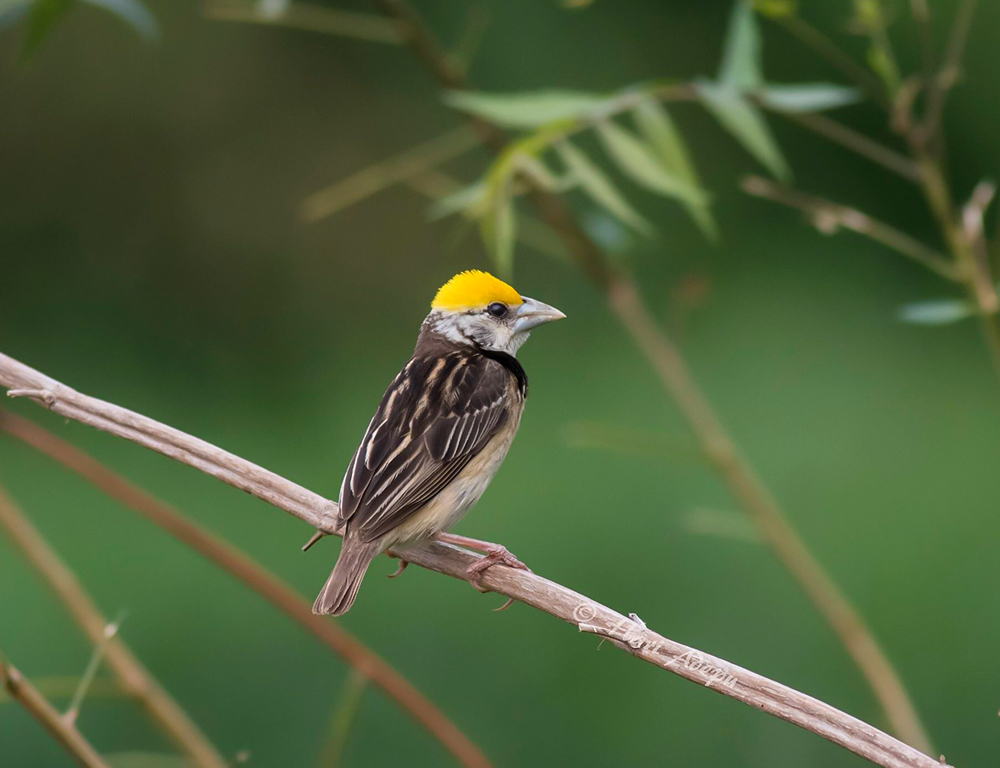
The black-breasted weaver is a species of weaver bird native to the northern river plains of India. It is also known as the Bengal weaver or black-throated weaver due to its distinctive coloration.
It has a black breast, throat, and forehead, with a yellow face and yellowish-green back. The wings are mostly black, with white stripes on the primaries. The tail is long and pointed and is usually held cocked upward.
The male has a red eye, while the female’s eye is brown. This species is found in the northern Indian subcontinent, primarily in the river plains of the Ganges and the Indus rivers.
It is usually found in open grasslands and agricultural fields, as well as in reed beds and marshes. It feeds on insects, seeds, and grains, which it can find in these habitats.
During the breeding season, the male usually builds a large, elaborate nest of dry grasses and reeds, often in a tree or bush.
The female then lines the nest with softer material, such as feathers or fur. The black-breasted weaver is a social bird, forming large flocks during the non-breeding season. It is also a vocal bird, with both sexes producing a variety of loud, melodious calls.
This species is not considered threatened or endangered, and its population is stable.
| Kingdom | Animalia |
| Phylum | Chordata |
| Class | Aves |
| Order | Passeriformes |
| Family | Ploceidae |
| Genus | Ploceus |
| Species | P. benghalensis |
43. Blue-throated Barbet
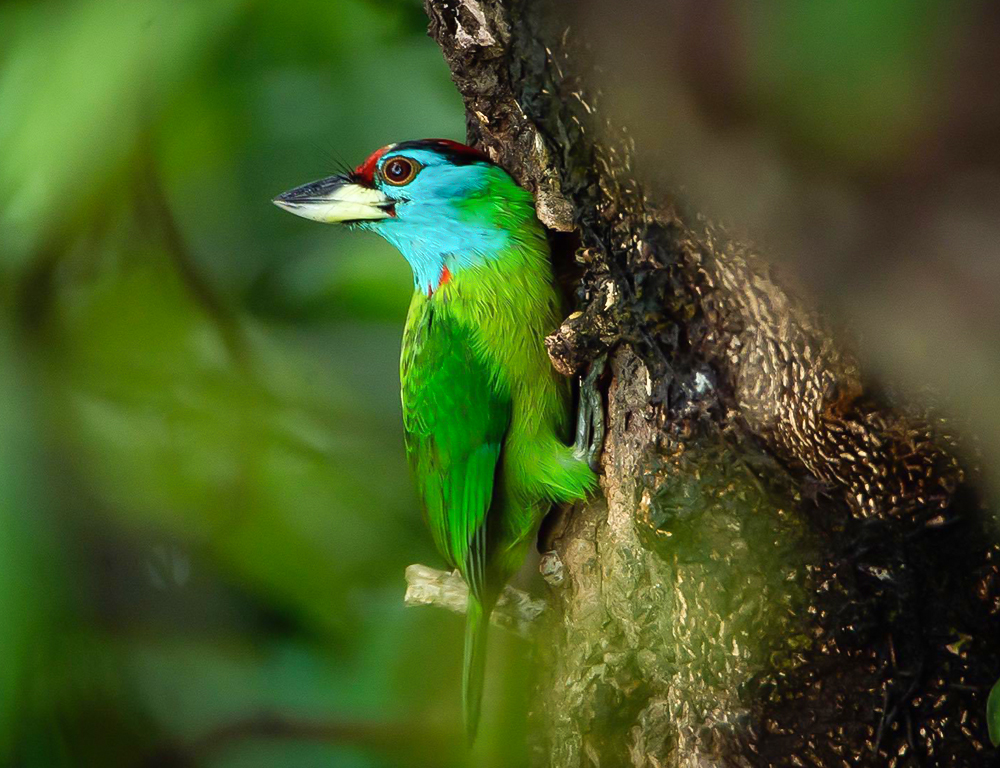
The blue-throated barbet is a colorful bird found in various parts of Asia. It is native to the foothills of the Himalayas and Southeast Asia, where it inhabits lowland and montane forests at an elevation range of 200–2,000 meters.
This vibrant bird has a unique plumage of bright green, blue, and red feathers that make it stand out from other birds in the region. The blue-throated barbet is a medium-sized bird with a body length of 24–25 cm and a wingspan of 33–36 cm.
Its diet consists mainly of fruit, berries, and insects, and it forages mainly in the lower canopy.
The blue-throated barbet is a social bird, often seen in pairs or small groups, and their calls are a loud, clear whistle.
The blue-throated barbet is an important species for conservationists to protect, as its habitat is threatened by deforestation and human activity.
It is also vulnerable to predation from larger birds, such as hawks, so conservation efforts to protect its habitat are vital for its survival.
The blue-throated barbet is a stunning sight to behold, and its presence is a reminder of the beauty and diversity of nature.
| Kingdom | Animalia |
| Phylum | Chordata |
| Class | Aves |
| Order | Piciformes |
| Family | Megalaimidae |
| Genus | Psilopogon |
| Species | P. asiaticus |
44. Blue-winged Leafbird
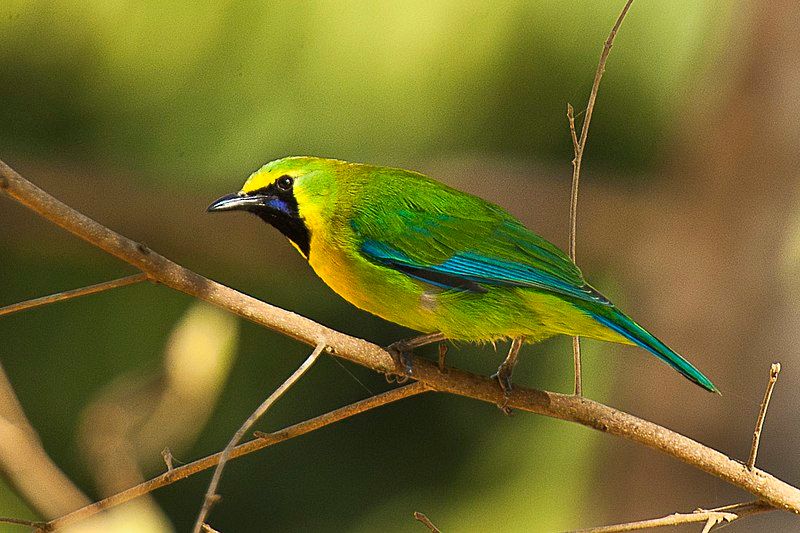
The blue-winged leafbird is a species of leafbird that is found in many parts of Southeast Asia. Its range extends from east of Borneo to southern Sumatra. This species of leafbird lives in both forests and secondary-growth areas.
It is found in these locations primarily for feeding and nesting. The blue-winged leafbird is usually seen alone or in small groups. Its bright blue wings contrast with its green body, making it easily recognizable. It feeds on insects, fruits, and berries.
The nest is built in the branches of trees and is often made of lichen and moss. The blue-winged leafbird is an important species in Southeast Asia’s ecosystem. It plays a key role in controlling insect populations and dispersing seeds.
It is also an important indicator of species, as its presence or absence can tell us a great deal about the health of an ecosystem. For these reasons, conservation efforts must be made to protect this species and its habitat.
| Kingdom | Animalia |
| Phylum | Chordata |
| Class | Aves |
| Order | Passeriformes |
| Family | Chloropseidae |
| Genus | Chloropsis |
| Species | C. moluccensis |
45. Blossom-headed Parakeet
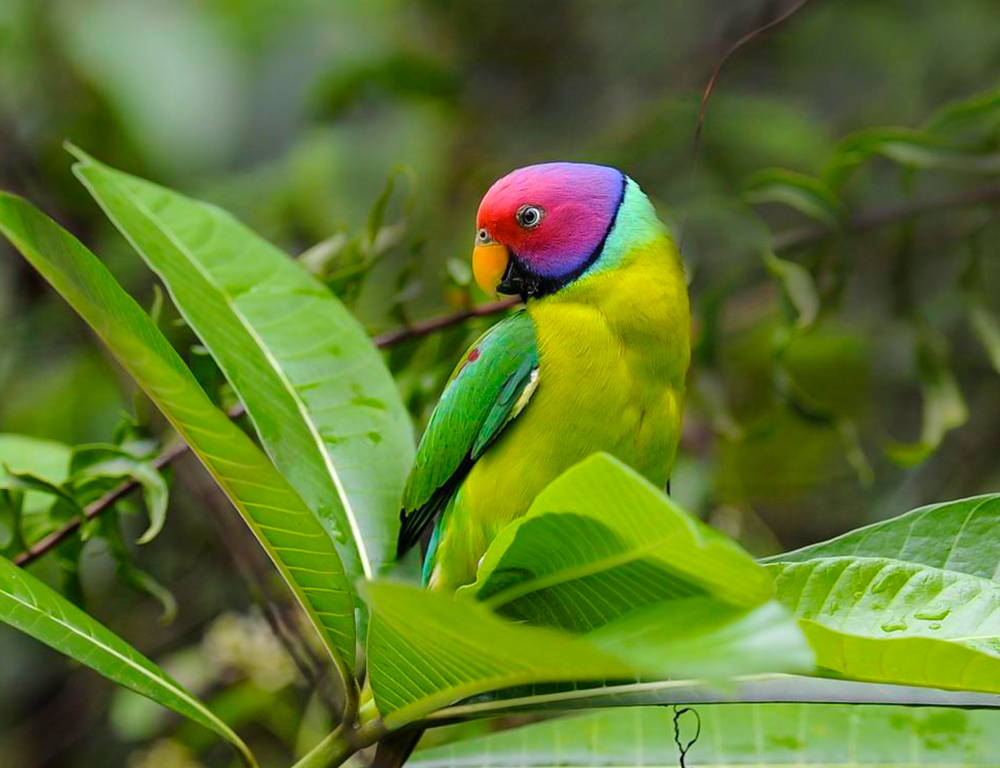
The blossom-headed parakeet is a member of the parrot family, which is scientifically referred to as Psittaculidae. This family includes over 112 species of parrots, which are mostly found in the tropical regions of the world.
These parrots are easily recognizable due to their varied colors and long, curved beaks. The blossom-headed parakeet is one of the most popular and widely distributed species in this family.
It is identifiable by its orange-red head, which is surrounded by a yellow and green body. This species is native to South Asia, Southeast Asia, and Africa. These parrots inhabit tropical forests, woodlands, and scrublands, and are known to be quite active during the day.
They feed on a variety of fruits, seeds, and insects, and can often be seen in small flocks of up to 30 individuals. The blossom-headed parakeet is an important part of the ecosystem, as they help to disperse seeds and pollinate flowers.
As a result, they are highly valued by conservationists and birders.
| Kingdom | Animalia |
| Phylum | Chordata |
| Class | Aves |
| Order | Psittaciformes |
| Family | Psittacidae |
| Genus | Himalayapsitta |
| Species | H. roseata |
46. Greater Coucal
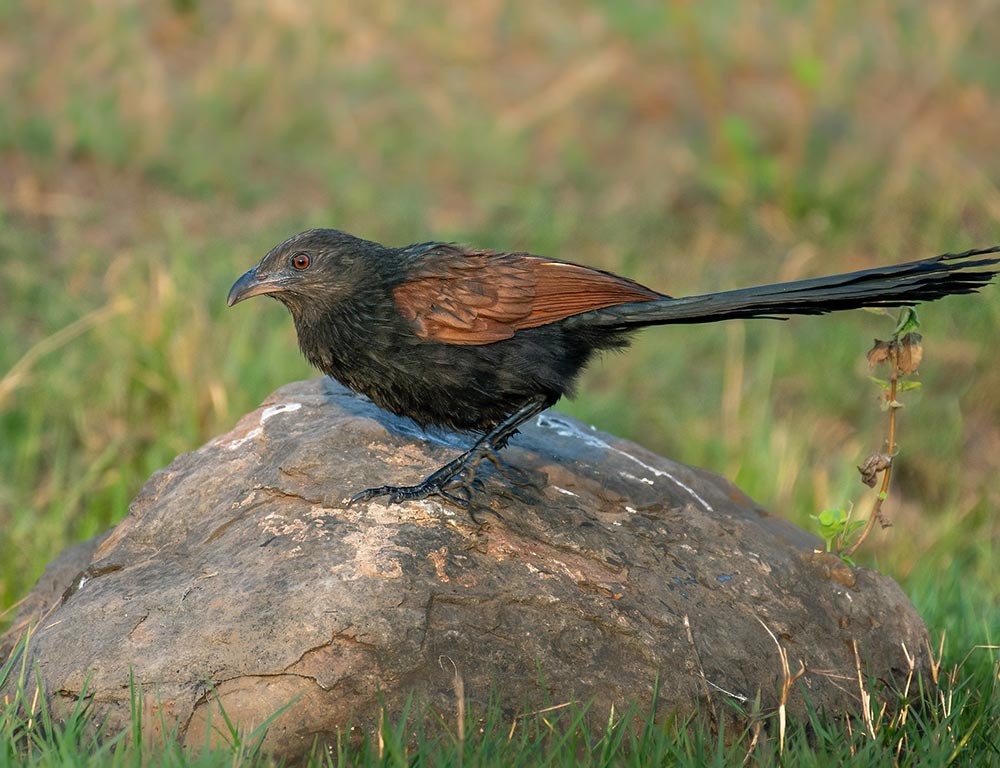
The greater coucal, also known as the crow pheasant, is a large bird that is part of the Cuculiformes order of birds. This order is made up of non-parasitic species, meaning that they do not lay eggs in the nests of other birds.
The greater coucal is native to the Indian Subcontinent and Southeast Asia, and it is divided into several subspecies, some of which are considered to be full species. It is a widespread resident in these regions and can be found across a wide variety of habitats.
The greater coucal is generally quite common, and its large size and striking colors make it a noticeable presence in its range. The greater coucal is an omnivore, eating a variety of insects, small mammals, and even fruits and berries.
It is known for its loud, distinctive call, which can be heard echoing across its range.
| Kingdom | Animalia |
| Phylum | Chordata |
| Class | Aves |
| Order | Cuculiformes |
| Family | Cuculidae |
| Genus | Centropus |
| Species | C. sinensis |
47. Large Woodshrike
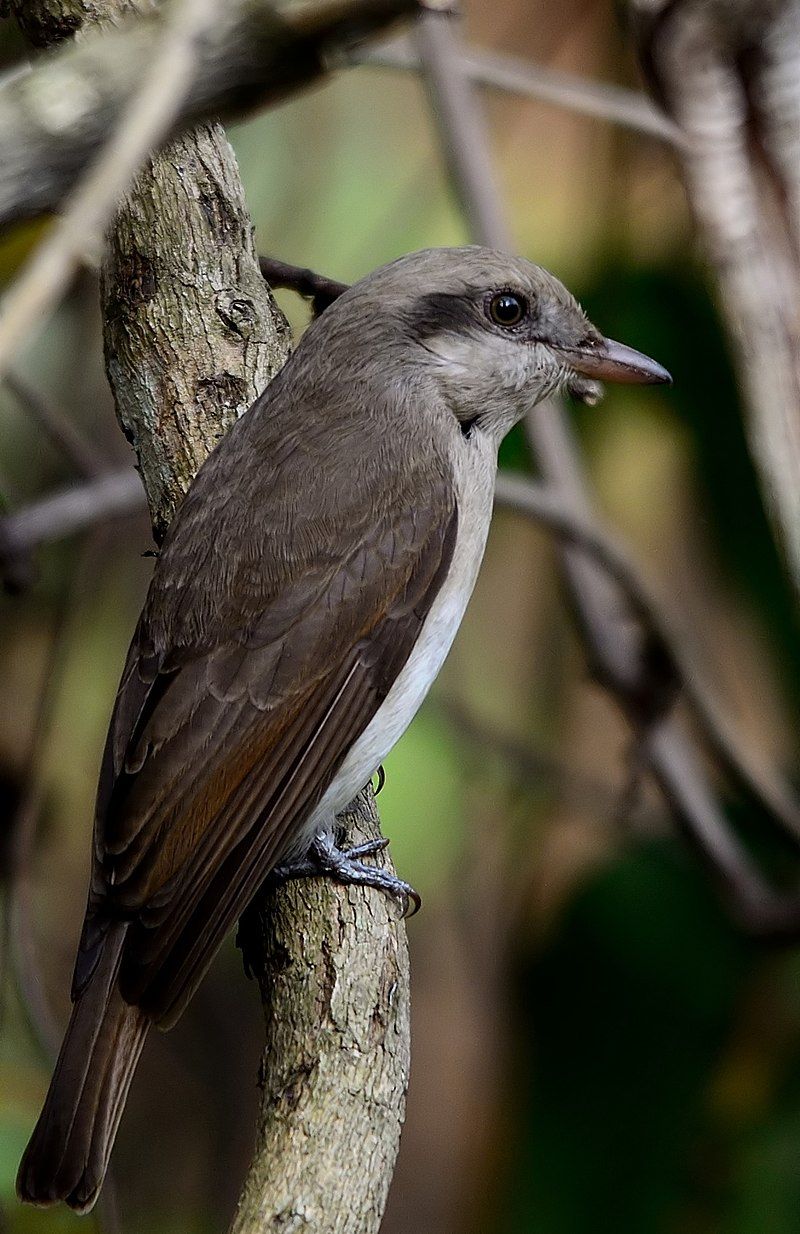
The large wood shrike is a species of bird found in south-eastern Asia, Sumatra, Java, and Borneo.
It inhabits a range of different forest types, including temperate forests, subtropical or tropical moist lowland forests, subtropical or tropical mangrove forests, and subtropical or tropical moist montane forests.
These areas provide the wood shrike with the food and shelter it needs to survive. Temperate forests are characterized by their cooler temperatures and seasonal changes.
Subtropical or tropical moist lowland forests have higher humidity levels and receive more rainfall than other ecosystems. Subtropical or tropical mangrove forests are forests that are located along coasts and estuaries, providing a unique environment for the birds.
Finally, subtropical or tropical moist montane forests are high-altitude forests that contain a variety of plants and animals and may be home to the large wood shrike.
All of these places provide the large wood shrike with diverse and abundant resources and form the basis of its survival.
| Kingdom | Animalia |
| Phylum | Chordata |
| Class | Aves |
| Order | Passeriformes |
| Family | Vangidae |
| Genus | Tephrodornis |
| Species | T. virgatus |
48. Verditer Flycatcher
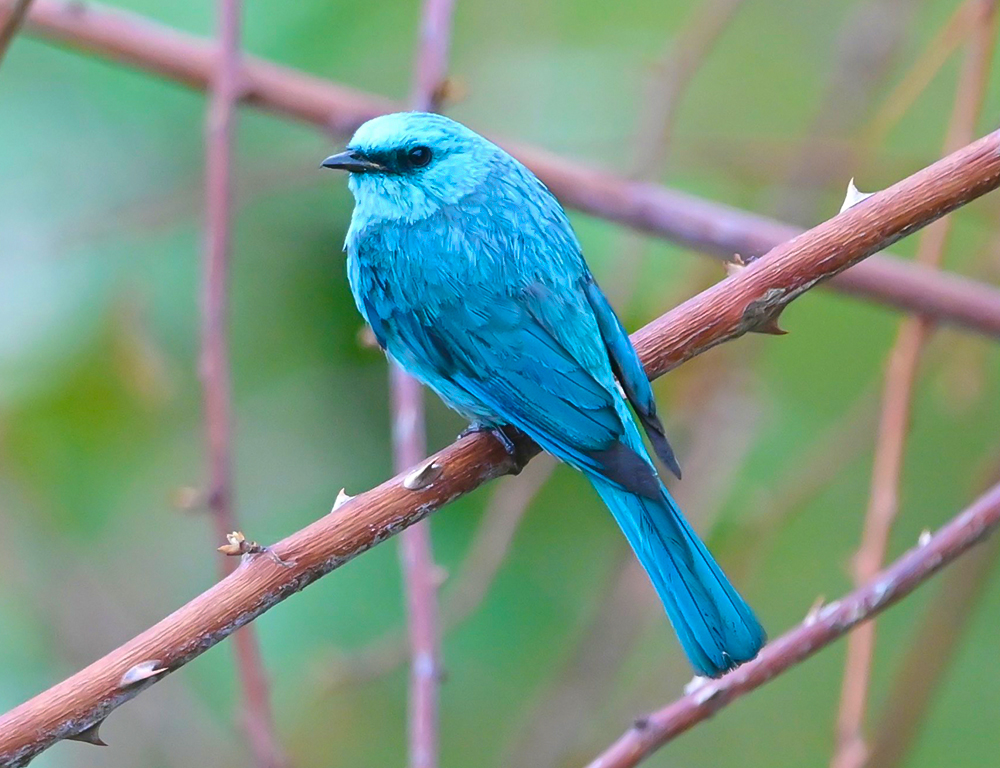
The verditer flycatcher is an Old World flycatcher found in a wide range of habitats from the Himalayas through Southeast Asia to Sumatra. This species is named after its unique copper-sulfate blue color, which is quite distinct from other species of flycatchers.
The bird has a small dark patch between its eyes and above its bill base, which is another distinctive feature. It is a small bird, measuring only around 13 centimeters in length and typically inhabits open woodlands and forest edges.
The verditer flycatcher feeds mainly on small insects and has a wide variety of calls, including a song of two to three short notes that are repeated frequently. The species is quite common in its range and its population is not currently considered to be threatened.
| Kingdom | Animalia |
| Phylum | Chordata |
| Class | Aves |
| Order | Passeriformes |
| Family | Muscicapidae |
| Genus | Eumyias |
| Species | E. thalassinus |
49. Hooded Pitta
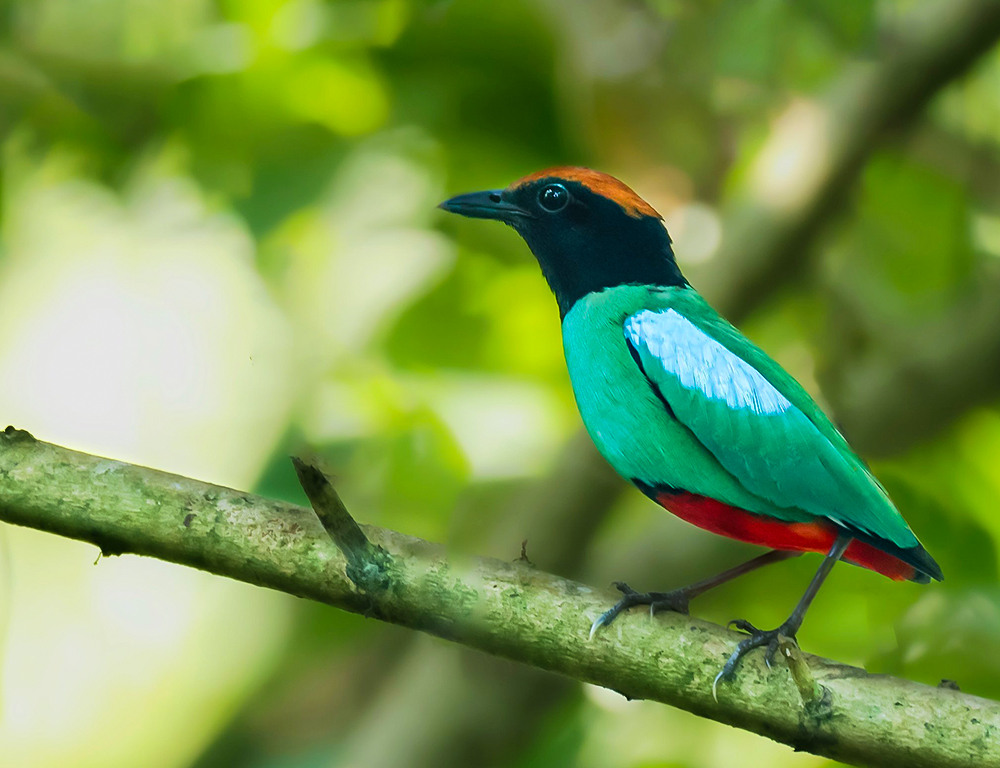
The hooded pitta is a small, elegant bird found in many areas of eastern and southeastern Asia, as well as maritime Southeast Asia. It belongs to the Pittidae family, a group of birds known for their colorful plumage and melodic calls.
The hooded pitta is easily recognizable due to its distinctive appearance; it has a green body with a black head and chestnut crown.
This bird is quite common in the areas where it lives and can be found in a variety of habitats including forests, plantations, and other cultivated areas. It is a ground-dwelling bird that feeds on small insects and other invertebrates.
The hooded pitta is a shy and solitary bird that is rarely seen in large numbers, and it is usually heard rather than seen. Its melodic call is a characteristic trill, which sounds like a series of peeps and is often heard in the early morning.
| Kingdom | Animalia |
| Phylum | Chordata |
| Class | Aves |
| Order | Passeriformes |
| Family | Pittidae |
| Genus | Pitta |
| Species | P. sordida |
50. Sultan Tit
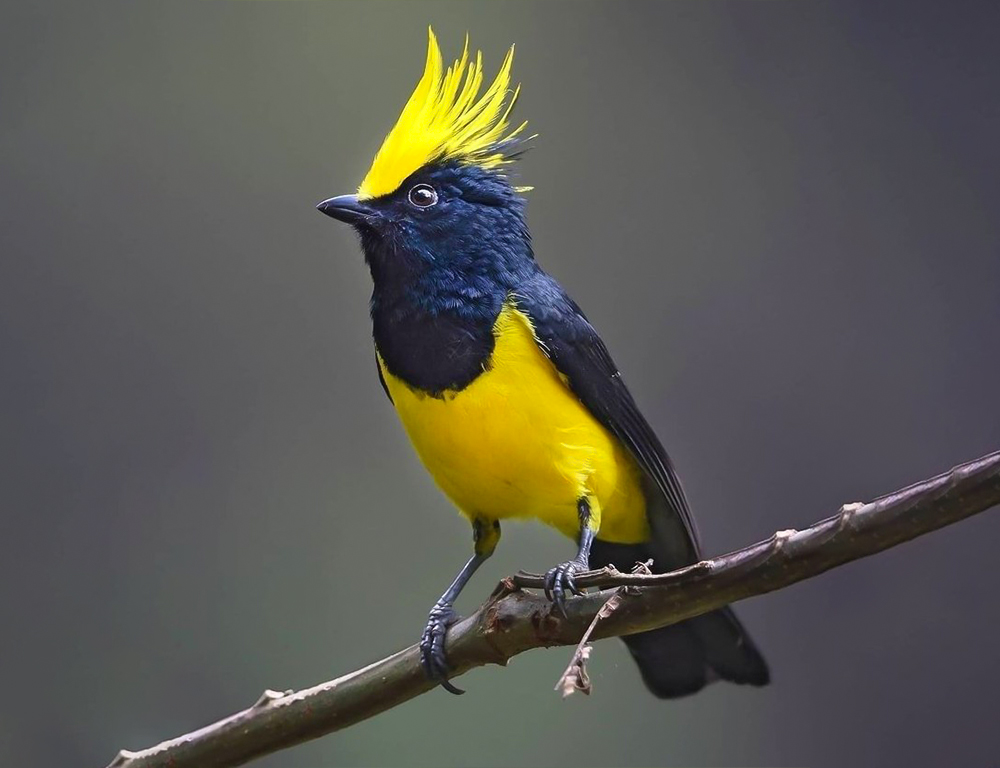
The Sultan Tit is a native to the forests of Asia, with a bright yellow crest and a dark bill. It has black upperparts and yellow underparts, and the male and female birds look very similar.
The female has greenish-black upperparts and a yellowish throat, which are different than those of the male. The juvenile bird is duller than the adult and has a shorter crest.
This species of bird is very attractive and has been spotted in many different parts of Asia, from India to China.
| Kingdom | Animalia |
| Phylum | Chordata |
| Class | Aves |
| Order | Passeriformes |
| Family | Paridae |
| Genus | Melanochlora |
| Species | M. sultanea |
51. Malayan Night Heron
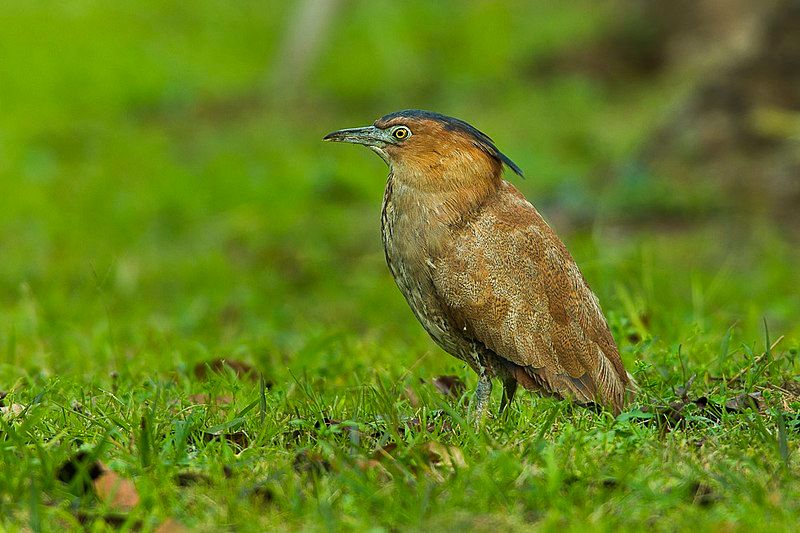
The Malayan night heron is a medium-sized heron found in the southern and eastern regions of Asia. It is also known as the Malaysian night heron and tiger bittern. This species of heron is generally gray or black, with a white throat and yellow bill.
The Malayan night heron has a long neck and long legs, making it well-suited for wading in shallow water for its prey.
It is typically active during dawn and dusk and is found in wetlands, swamps, and mudflats. This heron typically feeds on small fish, frogs, crustaceans, and insects, and will sometimes hunt for large prey such as snakes, lizards, and rodents.
It also has the unique ability to capture prey in mid-air by quickly darting forward and snatching its prey with its bill. The Malayan night heron is a solitary species, though they may form small flocks in the winter months.
During the breeding season, the heron typically nests in trees near water, with a clutch of two to four eggs being laid.
The female heron typically incubates the eggs for about 25 days, and both parents care for the young. Overall, the Malayan night heron is a unique species of heron that can be found in wetlands, swamps, and mudflats in southern and eastern Asia.
It is an impressive hunter and is a solitary species for the majority of the year.
| Kingdom | Animalia |
| Phylum | Chordata |
| Class | Aves |
| Order | Pelecaniformes |
| Family | Ardeidae |
| Genus | Gorsachius |
| Species | G. melanolophus |
Conclusion
Birds are an important part of the ecosystem in Assa. They provide several valuable services, from pollination to pest control. Birds also provide us with a great source of entertainment and joy.
The protection of birds and their habitats is essential for the health of the environment and the people of Assa. By taking steps to conserve and protect birds and their habitats, we can ensure the continued health of our environment and the birds that inhabit it.